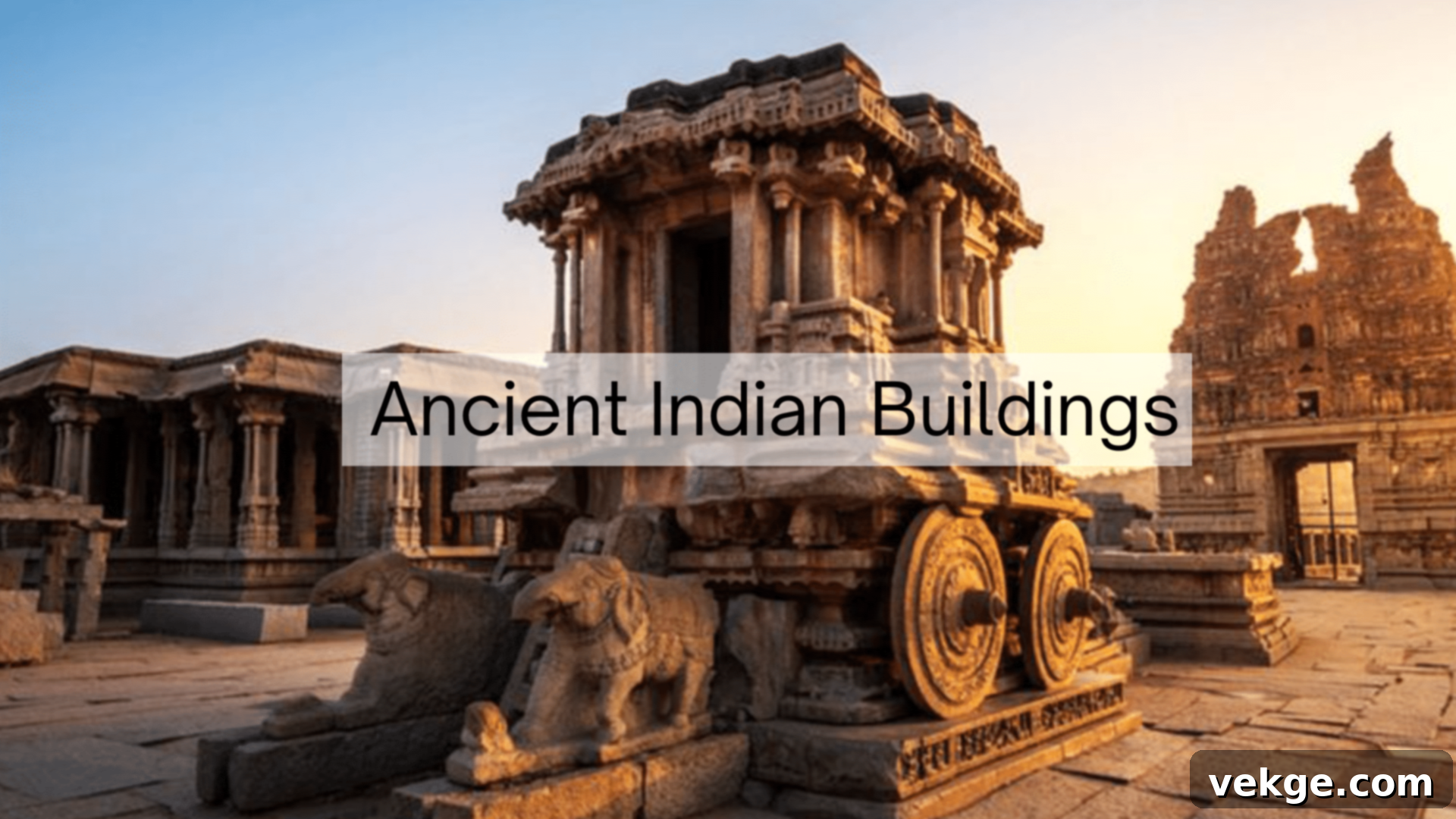Unveiling India’s Architectural Marvels: A Journey Through Ancient Temples, Forts, and Caves
India’s ancient architecture is a profound testament to its rich and multifaceted history, diverse cultural influences, and unparalleled craftsmanship. These magnificent structures stand not merely as old buildings but as enduring symbols of human ingenuity, spiritual devotion, and artistic brilliance that have withstood the test of time.
From the exquisitely carved temples of Khajuraho, renowned for their intricate details and symbolic narratives, to the awe-inspiring rock-cut caves of Ajanta and Ellora, which demonstrate monumental sculpting directly from solid rock, these sites showcase the incredible engineering prowess and advanced artistic vision of ancient Indian civilizations. Each monument tells a unique and compelling story, seamlessly blending artistic expression with deep religious and cultural significance.
With architectural styles ranging from the towering Hindu temples of the South to the elegant Indo-Islamic monuments of the North, India’s ancient buildings offer an extraordinary glimpse into its vibrant past. They reflect a dynamic interplay of local traditions with foreign influences, resulting in a diverse and captivating architectural landscape.
In this comprehensive guide, we will embark on a fascinating journey to explore some of the most famous and historically significant ancient structures in India. We will delve into their unique cultural, historical, and architectural importance, uncovering the secrets and stories embedded within their stone walls.
Iconic Ancient Buildings and Monuments Across India
India’s architectural heritage spans thousands of years, encompassing a vast array of styles, sophisticated construction methods, and profound cultural influences. Each structure is a tangible representation of the artistic ideals, technical skills, and spiritual values prevalent during its period of creation.
From the earliest rock-cut shelters and monumental stupas to the intricately designed temples and grand Mughal palaces, these sites continue to captivate the imagination of visitors, historians, and scholars worldwide. They serve as open-air museums, offering invaluable insights into the lives, beliefs, and aspirations of ancient Indian societies.
1. Taj Mahal (Agra, Uttar Pradesh)
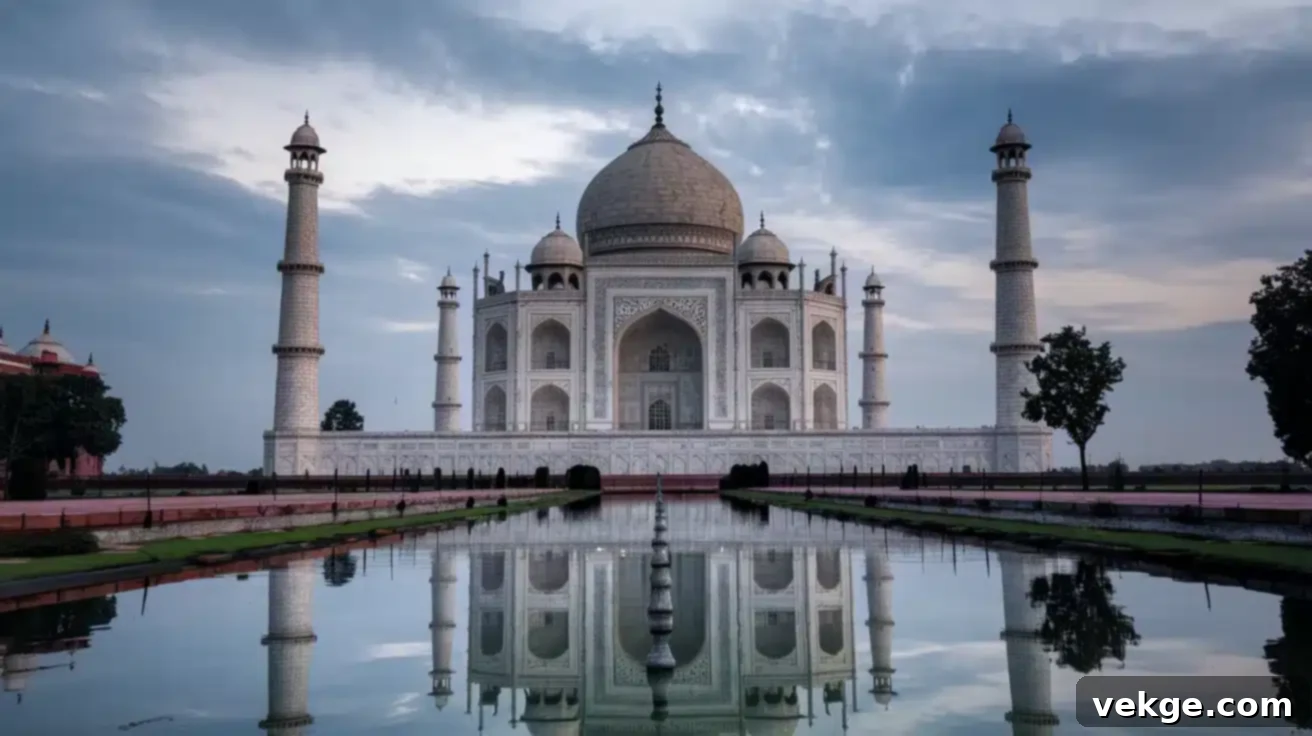
Constructed between 1631 and 1648 by Emperor Shah Jahan in eternal memory of his beloved wife, Mumtaz Mahal, the Taj Mahal is arguably India’s most recognizable and revered structure. This magnificent mausoleum, built entirely of pristine white marble, is a harmonious blend of Indian, Persian, and Islamic architectural styles, standing as a universal symbol of devotion, purity, and unparalleled craftsmanship.
The monument features a colossal 73-meter central dome, flanked by four slender minarets, and is set within a meticulously designed formal garden, known as a charbagh, with tranquil reflecting pools that enhance its ethereal beauty. The white marble surfaces are intricately inlaid with semi-precious stones using the exquisite *pietra dura* technique, creating delicate floral patterns and calligraphic verses from the Quran. The play of light on its surface, changing hues throughout the day, adds to its legendary charm. A UNESCO World Heritage Site, the Taj Mahal continues to draw millions, testifying to its enduring legacy.
2. Qutub Minar (Delhi)

The Qutub Minar, a towering five-tiered brick minaret, stands at an impressive 73 meters in height. Its construction began in 1193 under Qutb-ud-din Aibak, the first ruler of the Delhi Sultanate, and was completed by his successors, primarily Iltutmish. The minaret’s unique tapering shape, with a diameter reducing from 14.3 meters at the base to 2.7 meters at the top, is a striking example of early Indo-Islamic architecture.
Each of its five distinct storeys is adorned with detailed Islamic calligraphy, featuring verses from the Quran, and intricate geometric patterns. Notably, it also incorporates some Hindu design motifs, reflecting the cultural synthesis of the era. The complex includes other significant structures like the Quwwat-ul-Islam Mosque, one of the earliest mosques in India, and the enigmatic Iron Pillar, dating back to 402 CE, renowned for its remarkable corrosion resistance and historical value, making the entire complex a UNESCO World Heritage site.
3. Sanchi Stupa (Madhya Pradesh)
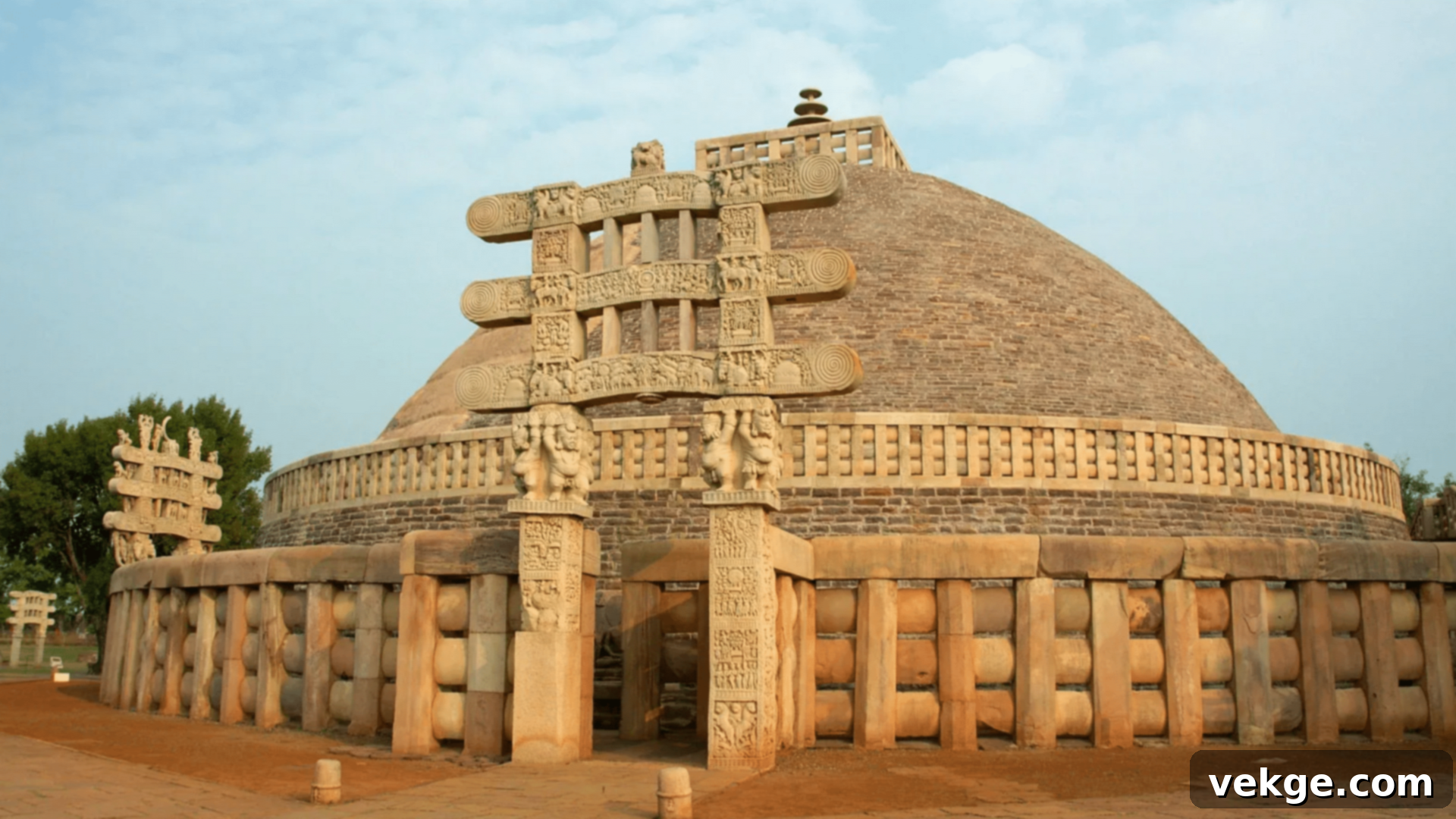
Erected during the 3rd century BCE by Emperor Ashoka of the Mauryan dynasty, the Great Stupa at Sanchi is one of the oldest and most significant stone structures in India, and a pivotal site in Buddhist history. The stupa features a massive hemispherical dome, approximately 16 meters high and 36 meters wide, which enshrines relics of the Buddha. It was originally a simple brick structure but was later enlarged and encased in stone during the Sunga period.
Its most distinctive features are the four ornate gateways, or *toranas*, positioned at each cardinal direction. These exquisitely carved gateways depict intricate narratives from Buddha’s life (Jataka tales), symbols representing the Buddha (as he was not depicted in human form initially), and scenes of daily life from that ancient period. The detailed craftsmanship on these toranas, particularly the depiction of natural forms and human figures, is considered a masterpiece of early Indian art. Sanchi is a UNESCO World Heritage Site, representing the zenith of Buddhist art and architecture in India.
4. Khajuraho Temples (Madhya Pradesh)
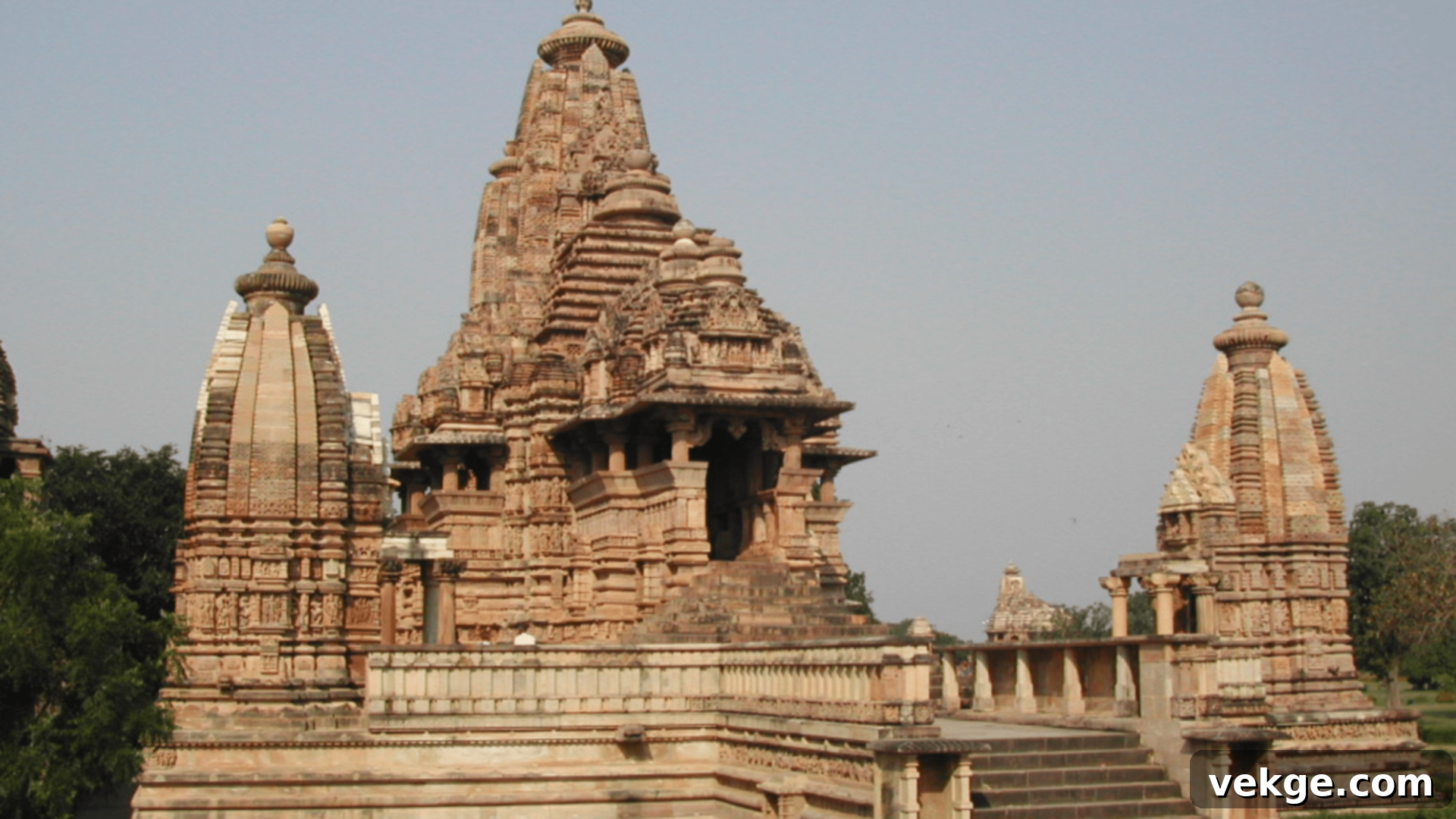
The Khajuraho Group of Monuments, built by the Chandela rulers between 950 and 1050 CE, originally comprised about 85 temples. Today, around 25 temples remain, standing as an exceptional example of North Indian temple architecture, particularly the Nagara style. These temples are globally renowned for their intricate and extensive carvings that celebrate various aspects of life, including spirituality, love, music, dance, and daily activities, often depicting sensual and erotic themes.
The temples are divided into Western, Eastern, and Southern groups, each featuring a unique blend of sandstone craftsmanship and sculptural brilliance. The most prominent temples include the Kandariya Mahadeva Temple, Lakshmana Temple, and Vishvanatha Temple. The sculptures, both religious and secular, are incredibly detailed and expressive, illustrating a sophisticated understanding of human emotion and form. Khajuraho is a UNESCO World Heritage Site, celebrated for its unique artistic and architectural integrity that pushed the boundaries of traditional temple art.
5. Ellora Caves (Maharashtra)
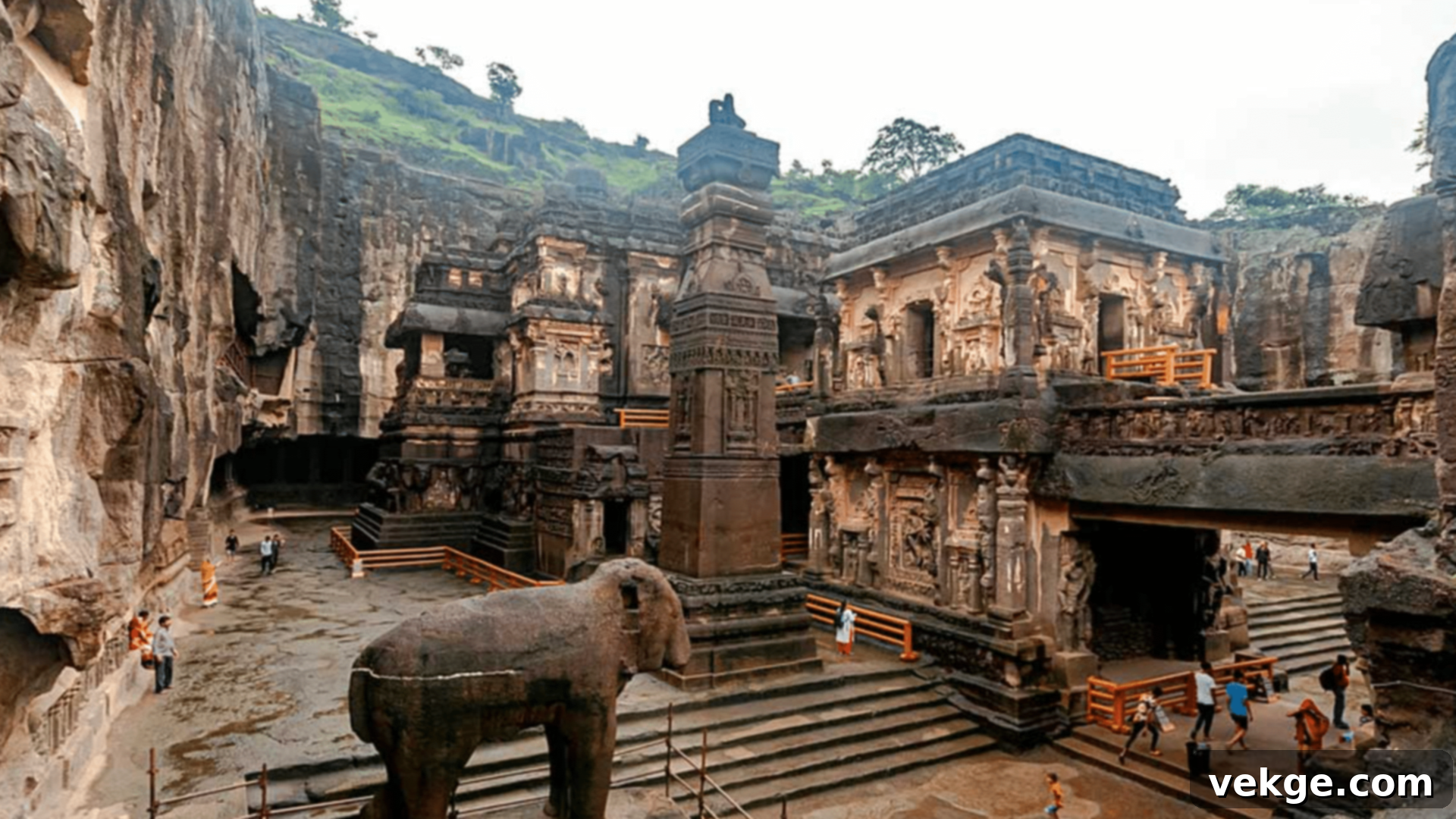
Spanning from the 6th to the 10th centuries CE, the 34 Ellora Caves represent one of the most remarkable examples of Indian rock-cut architecture. This sprawling complex uniquely features Buddhist, Hindu, and Jain structures carved directly into a single massive basalt cliff, showcasing a rare period of religious harmony and artistic collaboration. The caves served as monasteries, temples, and resting places, each hewn out with astonishing precision and detail.
The sheer scale and complexity of these monolithic structures are breathtaking. The Buddhist caves (1-12) are mostly *viharas* (monasteries) and *chaityas* (prayer halls), while the Hindu caves (13-29) include some of the most elaborate and sculptural temples. The Jain caves (30-34) are known for their detailed carvings and painted ceilings. Ellora is a UNESCO World Heritage Site, celebrated for its artistic excellence and its representation of religious coexistence.
6. Brihadeeswarar Temple (Thanjavur, Tamil Nadu)
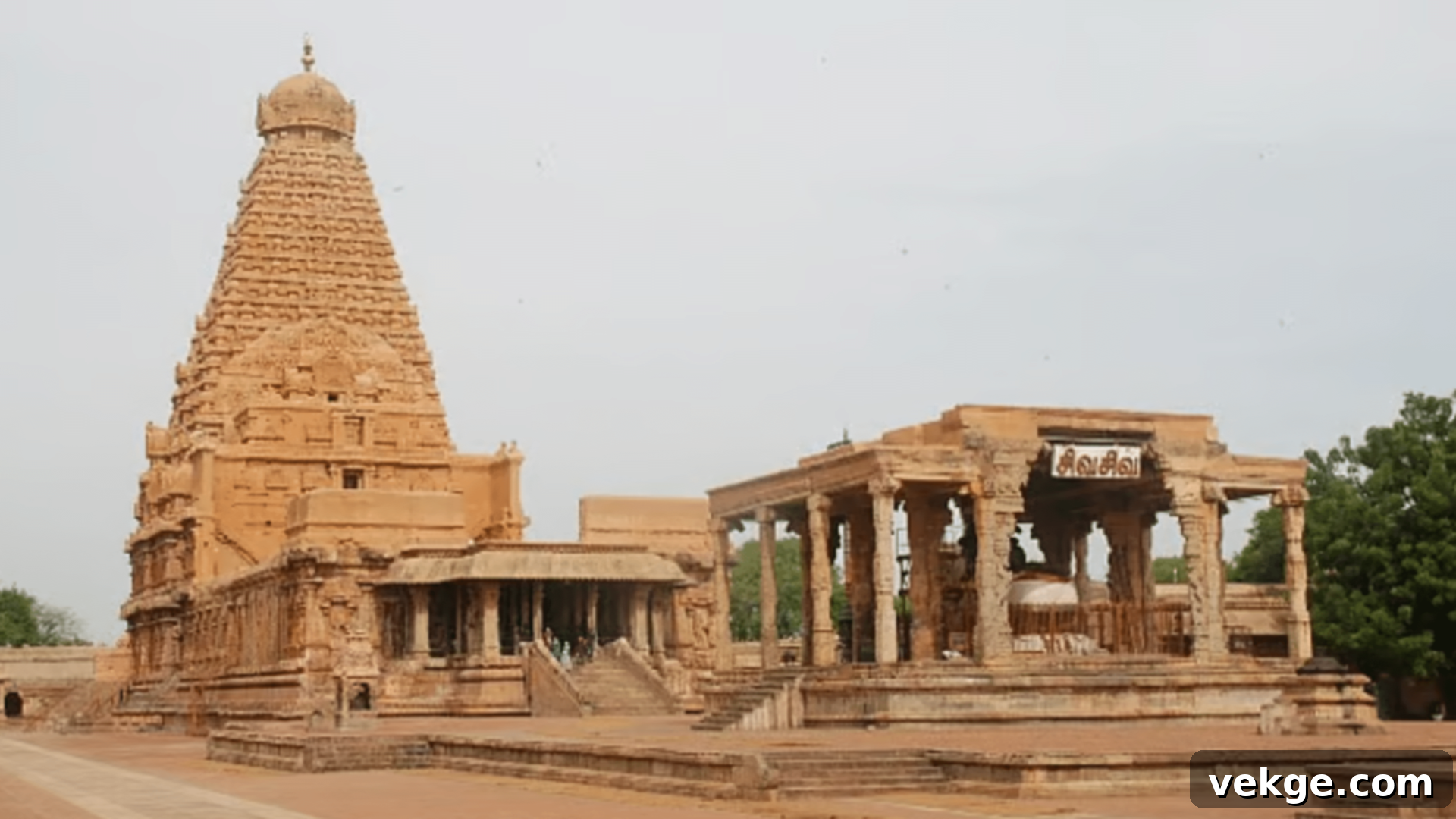
Commissioned by the great Chola emperor Raja Raja Chola I and completed in 1010 CE, the Brihadeeswarar Temple in Thanjavur is a magnificent example of Dravidian architecture. This colossal temple, dedicated to Lord Shiva, is constructed entirely of granite, a testament to the Chola dynasty’s engineering prowess and artistic vision. Its monumental *vimana* (tower over the sanctum) rises to an impressive height of 66 meters, a remarkable achievement for its time.
Atop the *vimana* sits an 80-ton capstone, believed to have been hoisted into place using a sophisticated long sloped ramp, a construction method that still puzzles modern engineers. The temple complex spans 3.7 hectares and includes a massive Nandi bull statue, carved from a single piece of stone, and intricate frescos within its walls. Part of the “Great Living Chola Temples” UNESCO World Heritage Site, it remains an active place of worship and a symbol of Chola architectural genius.
7. Hampi (Karnataka)
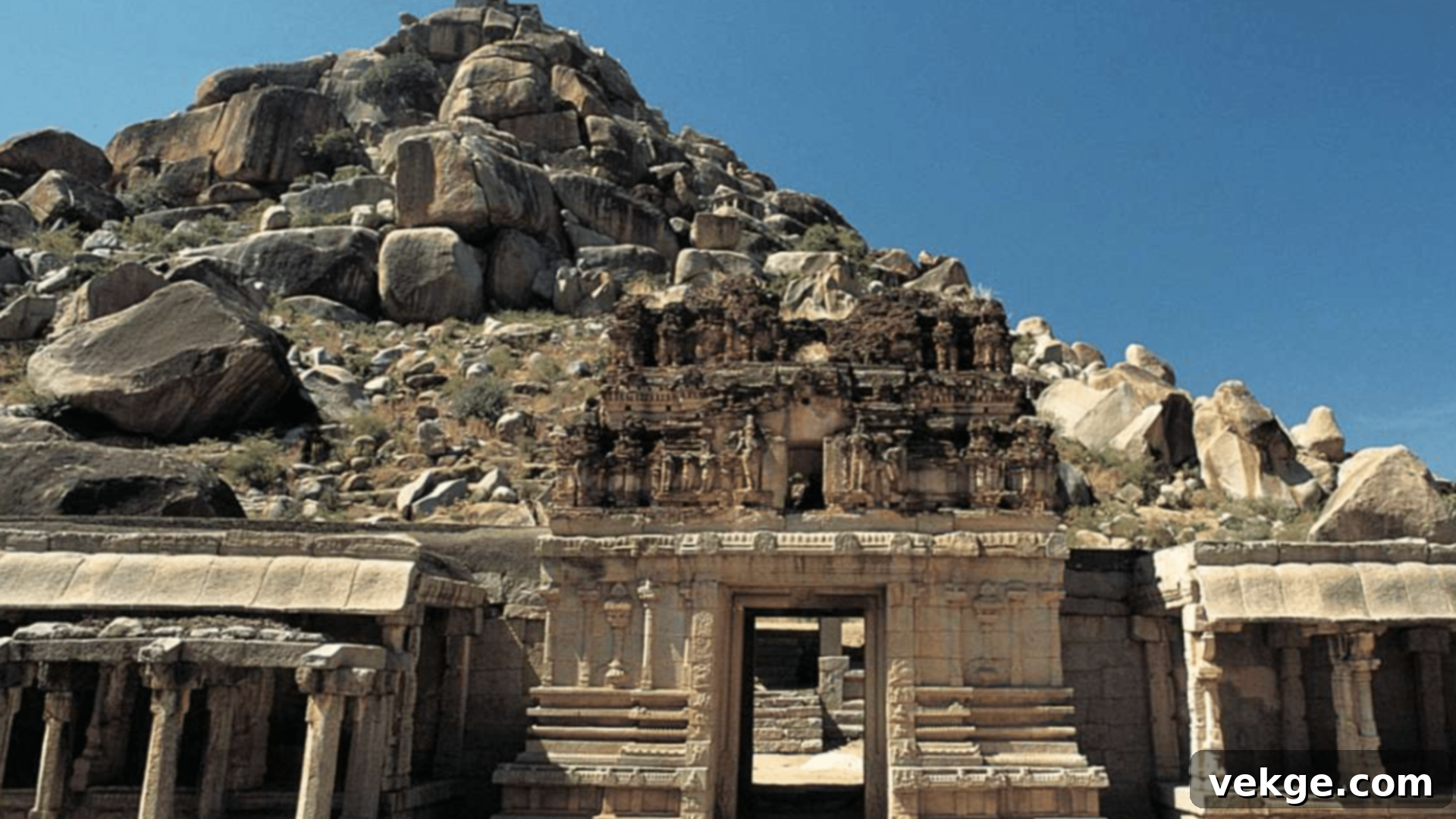
The historic site of Hampi served as the glorious capital of the mighty Vijayanagara Empire between the 14th and 16th centuries. Spread over an expansive area of more than 4,000 hectares, the ruins of Hampi are a breathtaking landscape of temples, royal enclosures, market areas, and sophisticated water management systems, all set amidst a surreal boulder-strewn terrain. The city was once one of the wealthiest in the world, known for its extensive trade and grand architecture.
Key features include the iconic Stone Chariot at the Vittala Temple, the musical pillars, large ceremonial halls, and elaborate *gopurams*. These structures vividly demonstrate the advanced engineering, urban planning skills, and artistic brilliance of the Vijayanagara period. A UNESCO World Heritage Site, Hampi is a poignant reminder of a powerful empire and a treasure trove for archaeologists and tourists alike.
8. Konark Sun Temple (Odisha)
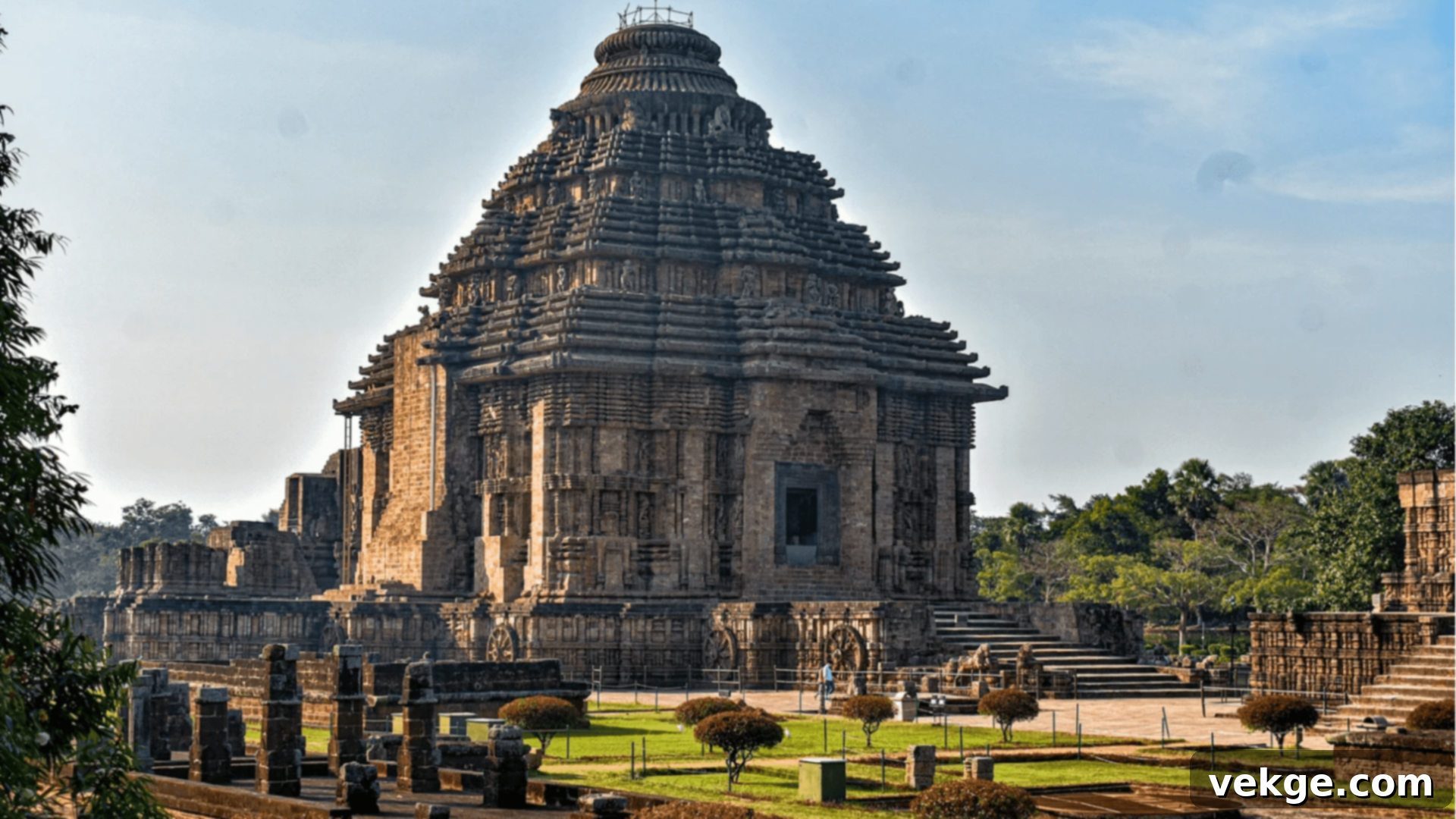
Built in the 13th century by King Narasimhadeva I of the Eastern Ganga dynasty, the Konark Sun Temple is an architectural masterpiece designed to resemble a colossal chariot for the sun god, Surya. This grand temple is adorned with twelve pairs of intricately carved wheels, each nearly 3 meters in diameter, and pulled by seven majestic horses. Each of the 24 wheels functions as a precise sundial, accurately marking time through the movement of the sun’s shadow.
The temple’s walls are adorned with an astonishing array of carvings, depicting stories from Hindu mythology, celestial beings, musicians, dancers, and vivid scenes of daily life from the period. Though much of the main tower is now in ruins, the surviving structures and sculptures highlight an extraordinary fusion of science, art, and devotion. Konark is a UNESCO World Heritage Site, celebrated for its unique architectural concept and sculptural richness.
9. Red Fort (Delhi)
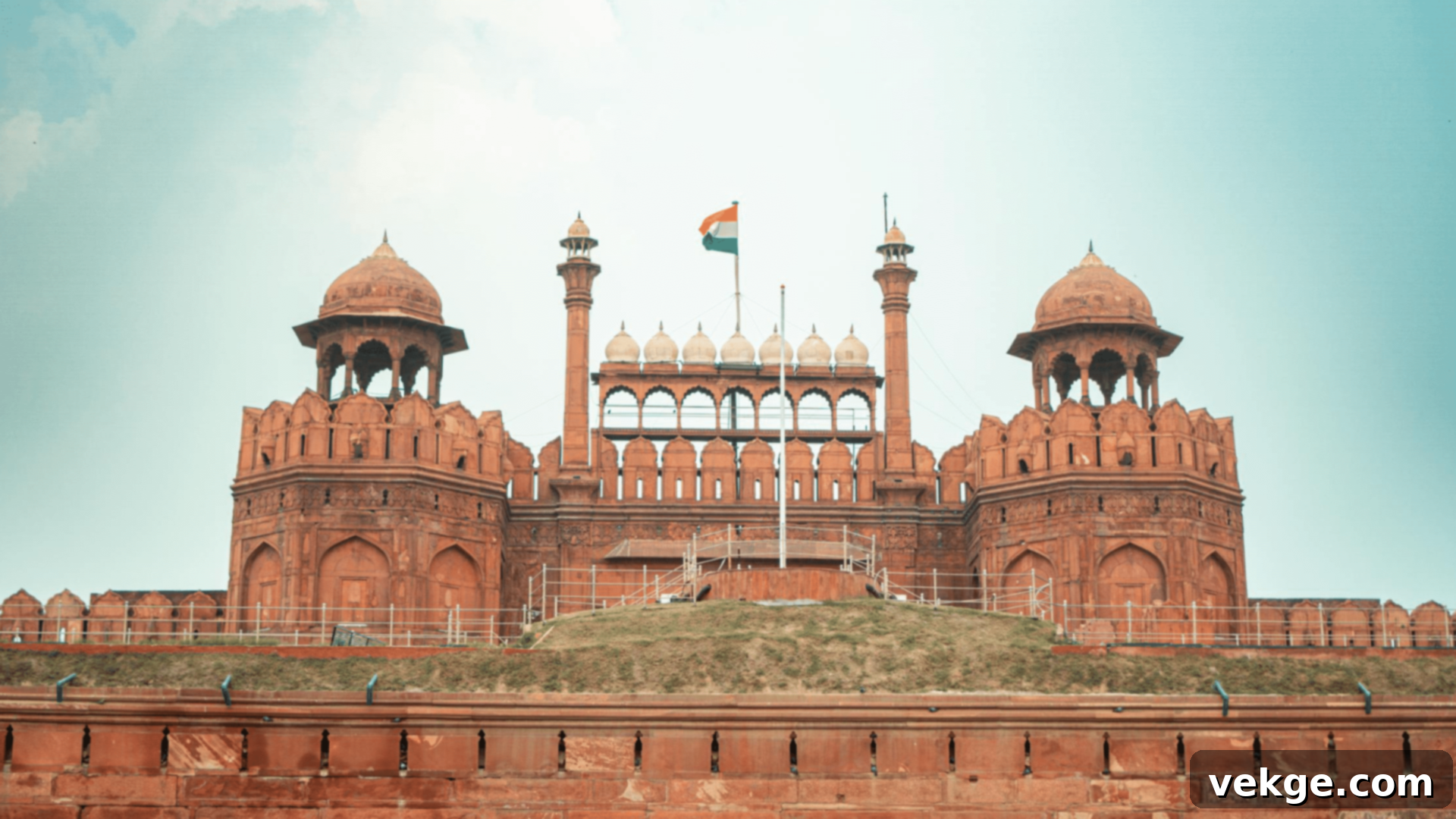
The Red Fort, or Lal Qila, was constructed from 1639 to 1648 under the direct patronage of Emperor Shah Jahan, who also built the Taj Mahal. This monumental fortress served as the main residence of the Mughal emperors for nearly 200 years. It is characterized by its imposing red sandstone walls, which stretch for 2.5 kilometers and reach a majestic height of 33 meters, giving the fort its distinctive name.
Inside the fort, visitors can explore a stunning complex of white marble palaces, grand audience halls (Diwan-i-Aam and Diwan-i-Khas), royal chambers, serene water features, and geometrically patterned gardens, reflecting the zenith of Mughal architecture. The architectural details include elegant scalloped arches, intricate colored stone inlay work (*pietra dura*), and finely carved screens. A UNESCO World Heritage Site, the Red Fort stands as a powerful symbol of India’s rich history and cultural identity, where the Prime Minister addresses the nation annually on Independence Day.
10. Humayun’s Tomb (Delhi)

Built between 1569 and 1570, Humayun’s Tomb holds immense historical and architectural significance as the first garden-tomb on the Indian subcontinent. Commissioned by Emperor Humayun’s widow, Bega Begum, this magnificent mausoleum houses the remains of the Mughal emperor. It is constructed primarily of red sandstone, elegantly accented with pristine white marble, setting a stylistic precedent for later Mughal architecture, most notably the Taj Mahal.
The tomb is set within a meticulously designed Persian *charbagh* (four-part garden) layout, dividing the area into four squares by water channels and pathways. This innovative garden design, symbolizing paradise, became a hallmark of Mughal imperial burials. The architectural structure itself features a grand central dome, double-domed roof, and intricate lattice work, laying a crucial foundation for the evolution of Mughal tomb architecture and earning its status as a UNESCO World Heritage Site.
11. Meenakshi Temple (Madurai, Tamil Nadu)
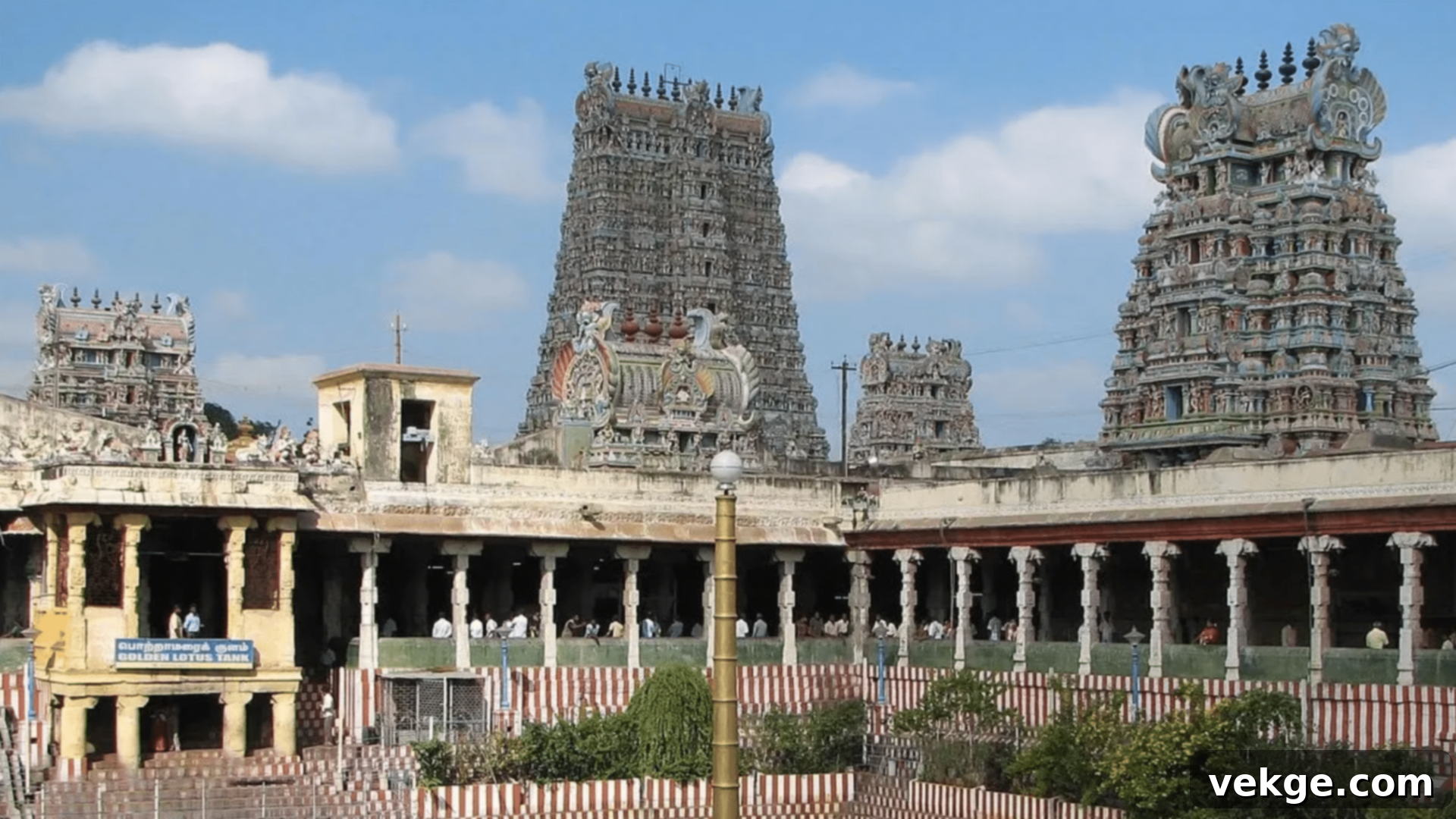
The Meenakshi Amman Temple in Madurai is one of India’s most vibrant and historically significant temples, having been a continuous center of worship for over 1,700 years. While its origins are ancient, the temple complex saw significant expansion and embellishment during the 16th and 17th centuries under the Nayaka rulers. It is a stunning example of Dravidian architecture, famed for its towering *gopurams* (entrance towers) that dominate the Madurai skyline.
The complex boasts 14 magnificent *gopurams*, with the tallest reaching an impressive 52 meters, adorned with thousands of colorful, intricately carved mythical figures, deities, and celestial beings. Inside, the temple features a “Hall of a Thousand Pillars,” each exquisitely carved, and numerous shrines dedicated to goddess Meenakshi (Parvati) and her consort Sundareswarar (Shiva). The temple remains an active and bustling pilgrimage site, hosting an annual ten-day festival that draws massive crowds, celebrating its enduring spiritual and cultural legacy.
12. Jantar Mantar (Jaipur, Rajasthan)
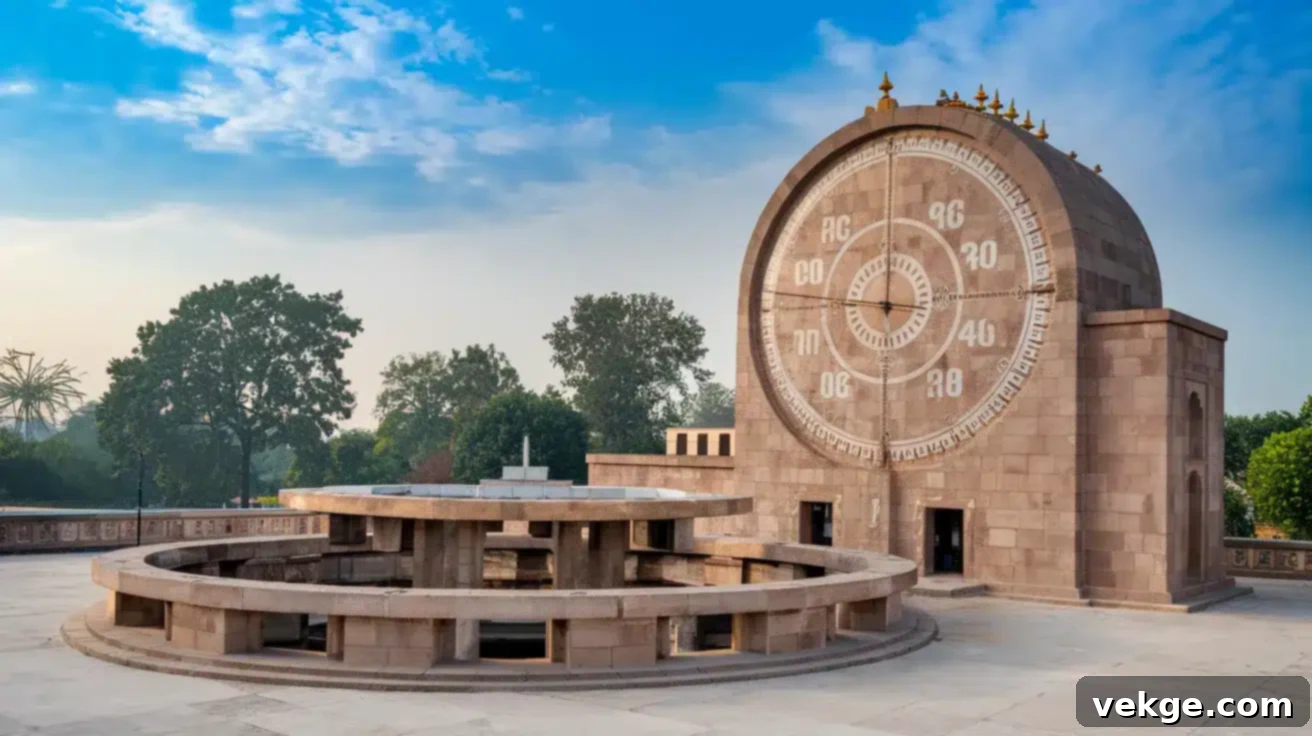
Commissioned in 1734 by Maharaja Jai Singh II, a keen astronomer, the Jantar Mantar in Jaipur is one of the best-preserved and most remarkable astronomical observatories of its kind. This UNESCO World Heritage Site comprises a collection of 19 monumental architectural astronomical instruments made of stone and brass, designed for observing celestial bodies with the naked eye.
The most prominent instrument is the Samrat Yantra, the world’s largest stone sundial, capable of measuring time with an accuracy of up to two seconds. Other instruments were used to measure the time of day, predict eclipses, track stars, and determine the declinations of planets. The Jantar Mantar showcases a profound understanding of ancient Indian astronomy and mathematics, demonstrating a period of significant scientific inquiry and innovation in India.
13. Rani ki Vav (Patan, Gujarat)

Built in 1063 CE by Queen Udayamati in memory of her husband, King Bhimdev I of the Solanki dynasty, Rani ki Vav (Queen’s Stepwell) is an extraordinary example of a subterranean architectural marvel. This intricately carved stepwell is designed as an inverted temple, with seven levels of stairs descending deep into the earth to reach the water source, symbolizing the sanctity of water. More than 500 principal sculptures and over a thousand minor ones adorn its walls, depicting religious, mythological, and secular themes.
The sculptures primarily feature Vishnu in his ten incarnations (Dasavataras), alongside various goddesses, apsaras (celestial nymphs), and scenes of daily life. The stepwell also incorporates sophisticated cooling chambers that provided relief from the intense heat, demonstrating early awareness of climate-responsive design. Rani ki Vav is a UNESCO World Heritage Site, celebrated for its artistic excellence and hydraulic engineering.
14. Bodh Gaya (Bihar)
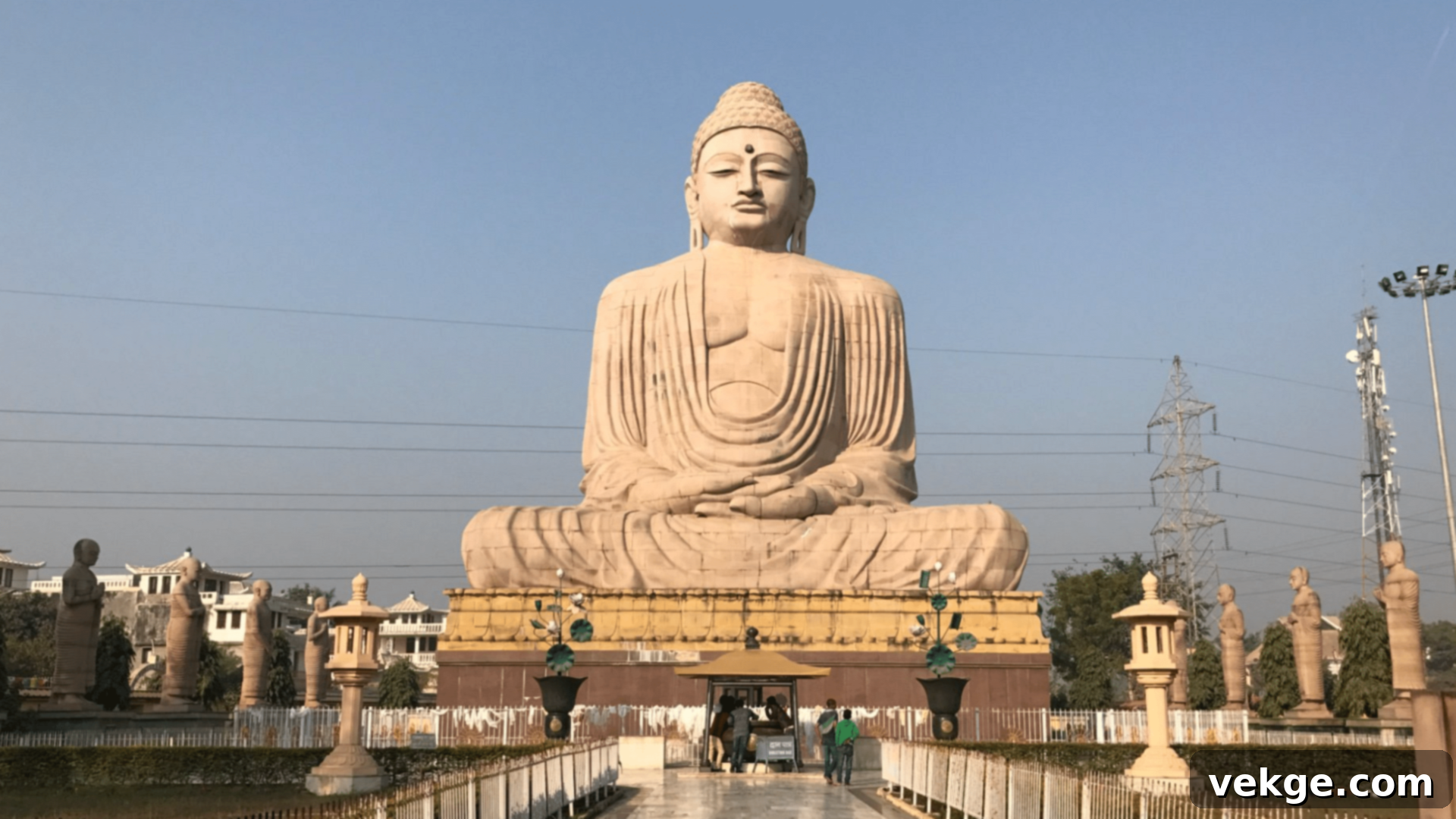
Bodh Gaya holds immense spiritual significance as the sacred site where Siddhartha Gautama, the Buddha, is believed to have attained enlightenment under the Bodhi Tree. The Mahabodhi Temple Complex, dating predominantly from the 5th or 6th century CE, is the most prominent structure here. It features a distinctive pyramidal spire that rises majestically to 52 meters, a remarkable example of brick architecture from the Gupta period.
The complex includes the direct descendant of the original Bodhi Tree, the Vajrasana (Diamond Throne), which is believed to be the exact spot where Buddha sat, and ancient stone railings that enclose the main temple. Surrounding the central temple are numerous smaller shrines and monasteries established by various Buddhist countries, each reflecting their unique architectural styles. Bodh Gaya is a UNESCO World Heritage Site, a global pilgrimage destination that symbolizes the birth of Buddhism.
15. Kailasa Temple (Ellora, Maharashtra)
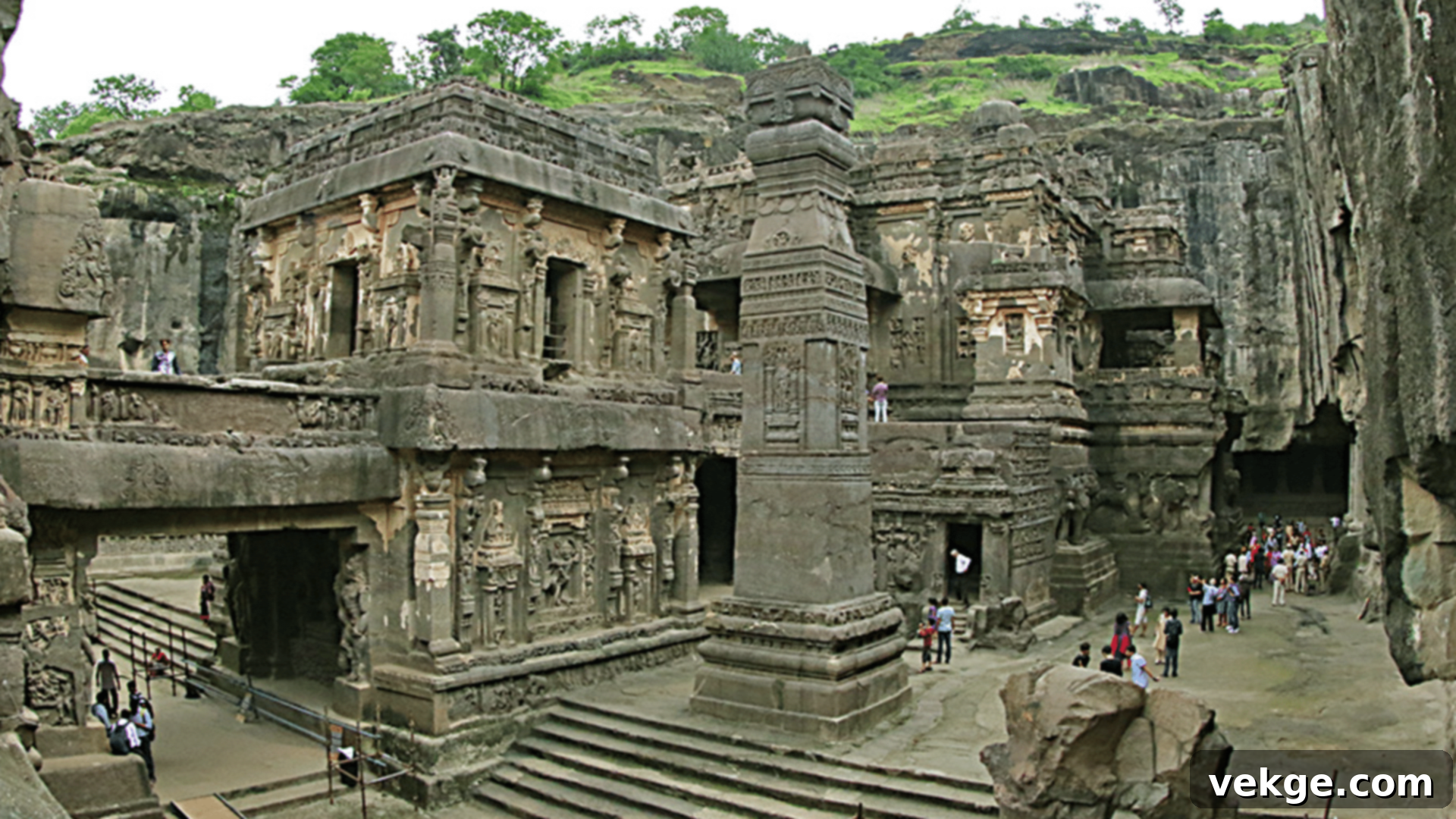
Carved in the 8th century CE under the patronage of the Rashtrakuta dynasty, the Kailasa Temple (Cave 16) within the Ellora Caves complex is widely considered the largest monolithic structure in the world. It is not merely a cave temple but an entire multi-storeyed temple complex, including shrines, gateways, courtyards, and a massive Nandi pavilion, all meticulously carved downwards from a single, gigantic piece of living rock.
The construction involved the removal of an estimated 200,000 to 400,000 tons of stone, starting from the top of the cliff and working downwards, a feat of engineering and artistic vision unparalleled in history. The temple complex is dedicated to Lord Shiva and is adorned with intricate sculptures of deities, mythical creatures, and elaborate narrative panels depicting scenes from Hindu epics. Its sheer scale, detailed carvings, and unique construction method make it a breathtaking testament to ancient Indian craftsmanship and devotion.
16. Virupaksha Temple (Hampi, Karnataka)

Located amidst the captivating ruins of Hampi, Karnataka, the Virupaksha Temple is one of India’s oldest continuously functioning Hindu temples, dedicated to Lord Shiva as Virupaksha. While its origins trace back to the 7th century, the temple was significantly expanded and embellished during the flourishing period of the Vijayanagara Empire in the 14th century, particularly under the reign of King Deva Raya II.
Its most striking feature is the towering, nine-tiered eastern *gopuram* (gateway tower), which rises to a height of 160 feet (approximately 49 meters), adorned with countless stucco figures of gods, goddesses, and mythological beasts. The temple complex includes various smaller shrines, pillared halls, and a prominent inner sanctum housing the Shiva linga. A unique architectural marvel within the temple is the camera obscura effect, which projects an inverted shadow of the main tower onto a wall inside. The Virupaksha Temple remains an active and vibrant center of worship, particularly famous for the annual Virupaksha Car Festival.
17. Ajanta Caves (Maharashtra)
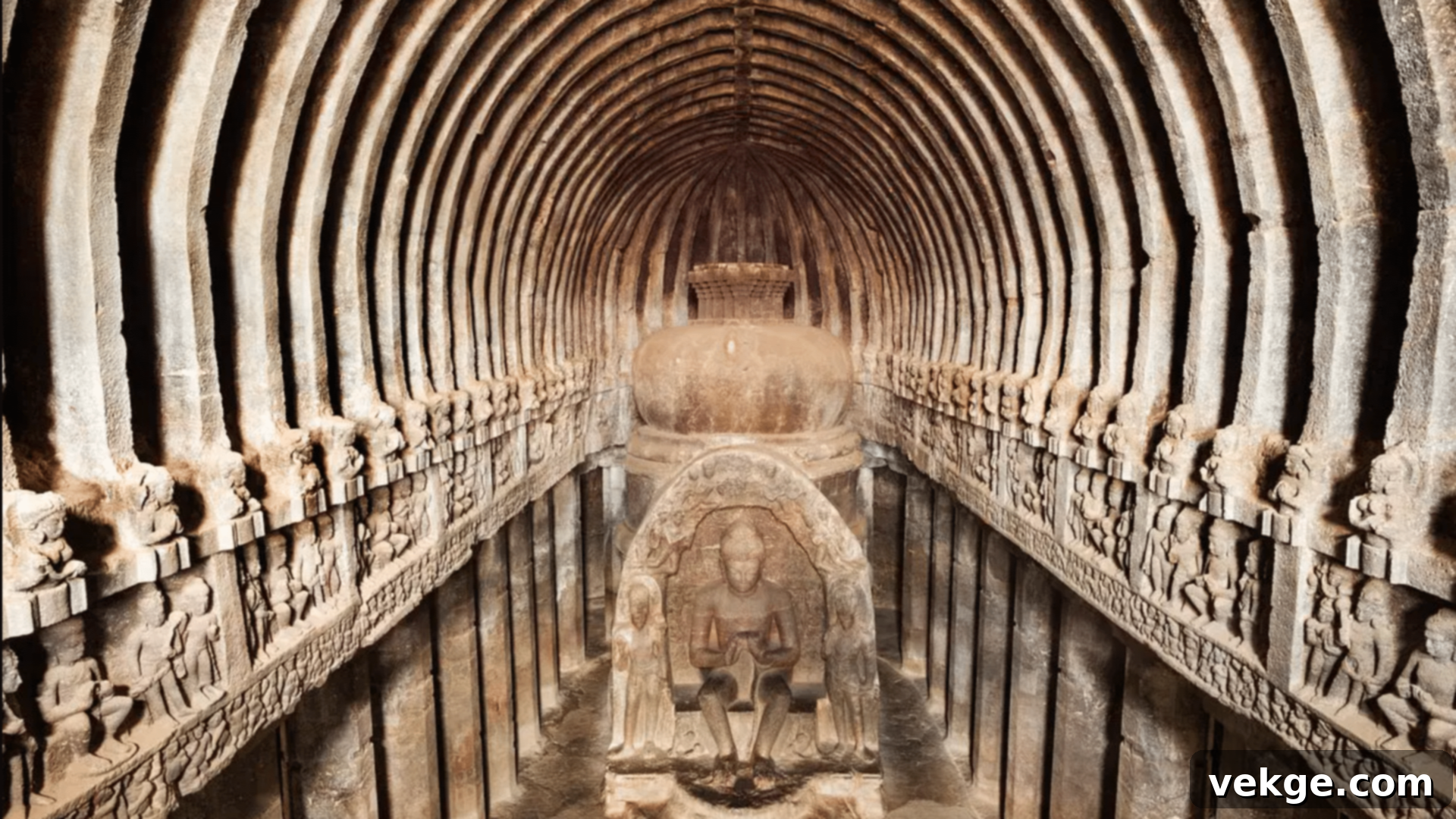
The Ajanta Caves comprise a magnificent collection of 30 Buddhist rock-cut cave monuments, meticulously carved into a horseshoe-shaped cliff in Maharashtra. These caves span two distinct phases of Buddhist architecture and art: the Hinayana phase (2nd century BCE to 1st century CE) and the Mahayana phase (5th to 6th century CE). They include impressive *chaitya-grihas* (prayer halls) and *viharas* (monasteries), showcasing a profound artistic and spiritual legacy.
The Ajanta Caves are particularly renowned for their exquisite murals and sculptures, considered masterpieces of ancient Indian art. The murals depict vivid narratives from the Jataka tales (stories of the Buddha’s previous lives), along with detailed portrayals of court life, common people, clothing, customs, and natural settings of the time. These paintings, executed with remarkable precision and vibrant colors, offer invaluable insights into Buddhist iconography and the social fabric of ancient India. A UNESCO World Heritage Site, Ajanta is a testament to the artistic and religious fervor of its creators.
18. Vittala Temple (Hampi, Karnataka)
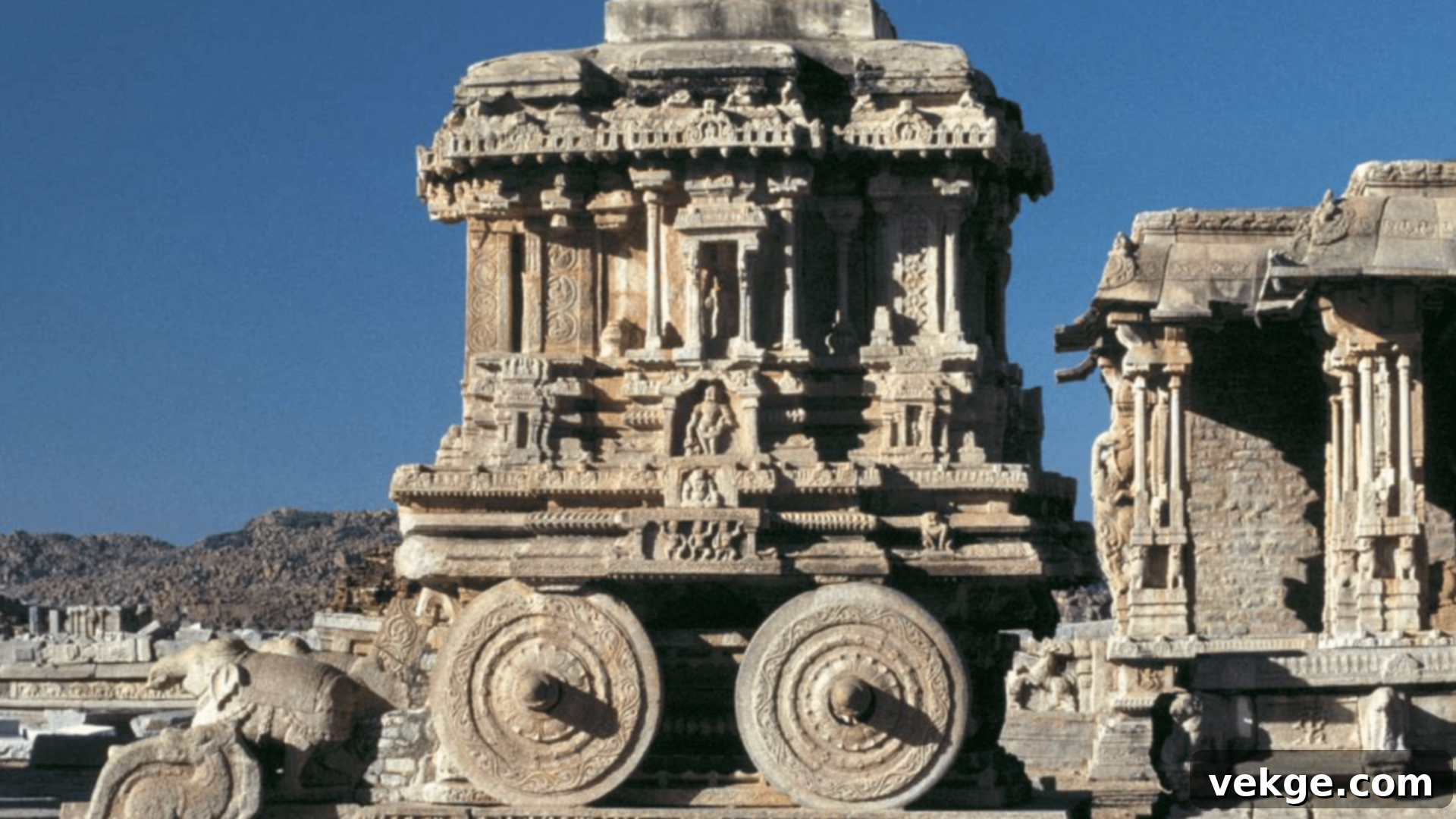
Constructed in the 15th century under the Vijayanagara Empire, the Vittala Temple in Hampi is celebrated for its extraordinary architectural and sculptural brilliance. This temple, dedicated to Lord Vittala (a manifestation of Vishnu), is considered the pinnacle of Vijayanagara art. Its most iconic feature is the magnificent Stone Chariot, a miniature temple carved to resemble a processional chariot, which has become a symbol of Hampi.
Another astonishing feature of the Vittala Temple is its “Musical Pillars” in the main hall. These intricately carved pillars, when gently tapped, produce different melodic tones, demonstrating an advanced understanding of acoustics and stone craftsmanship. The main hall is further decorated with exquisite sculptures of dancers, musicians, and travelers, illustrating the rich cultural life of the empire. The temple’s design reflects both unparalleled artistic detail and sophisticated structural skill, making it a highlight of the Hampi UNESCO World Heritage Site.
19. Chittorgarh Fort (Rajasthan)
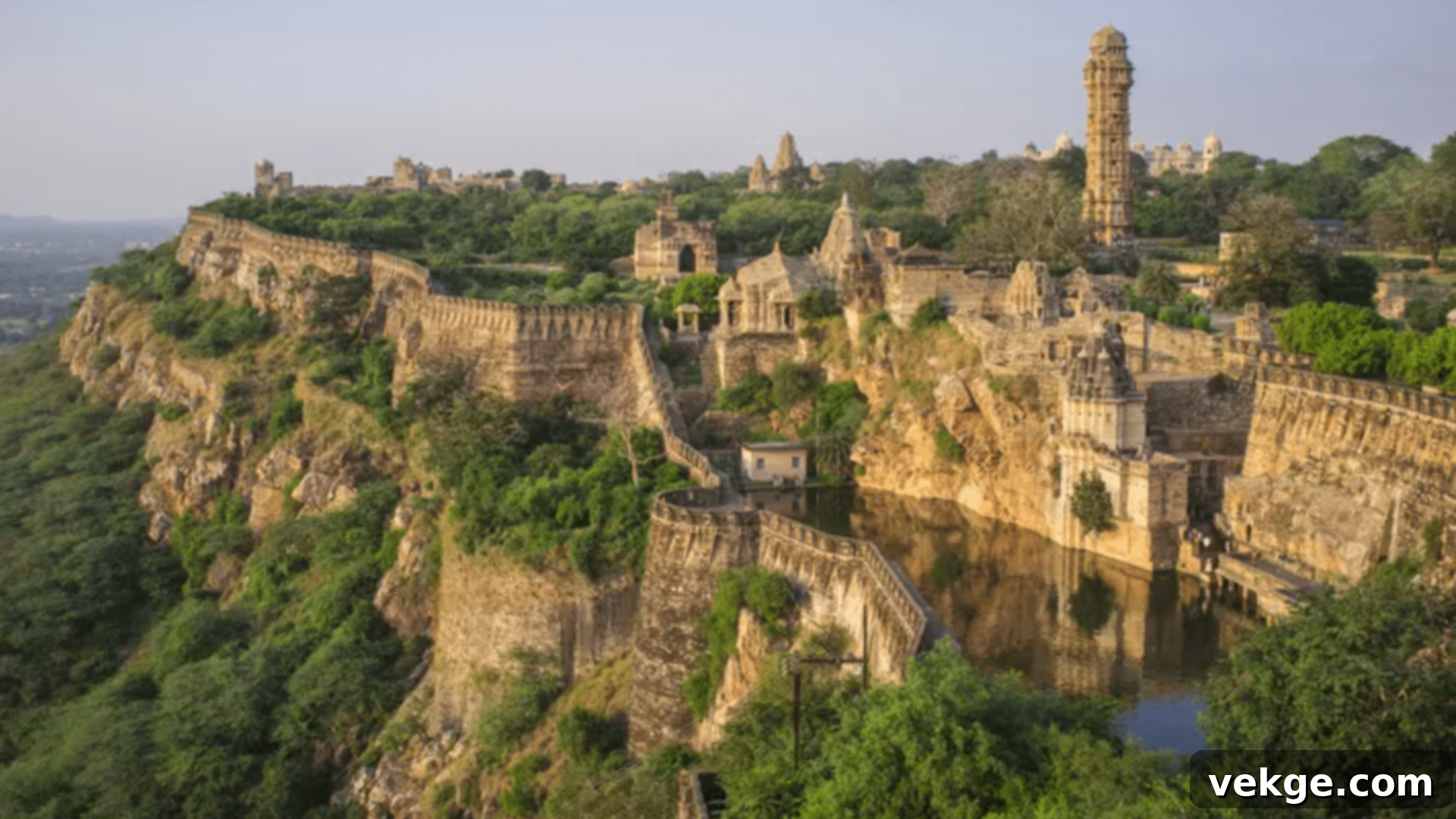
Chittorgarh Fort, perched majestically on a hilltop rising 180 meters above the plains, is the largest fort in India, encompassing a vast area of 280 hectares. Its construction and development spanned several centuries, primarily between the 7th and 16th centuries, by various Rajput rulers, most notably the Mewar dynasty. This formidable fortress includes an extensive complex of palaces, temples, gates, and towers, all protected by massive stone walls.
The fort holds immense historical significance, known for its heroic sieges and acts of valor, particularly the “Jauhar” (mass self-immolation) performed by Rajput women to protect their honor. Prominent structures within include the Kirti Stambh (Tower of Fame) and Vijay Stambh (Tower of Victory), both adorned with intricate carvings. Chittorgarh Fort is a UNESCO World Heritage Site, part of the “Hill Forts of Rajasthan,” symbolizing Rajput bravery, sacrifice, and architectural might.
20. Lingaraj Temple (Bhubaneswar, Odisha)
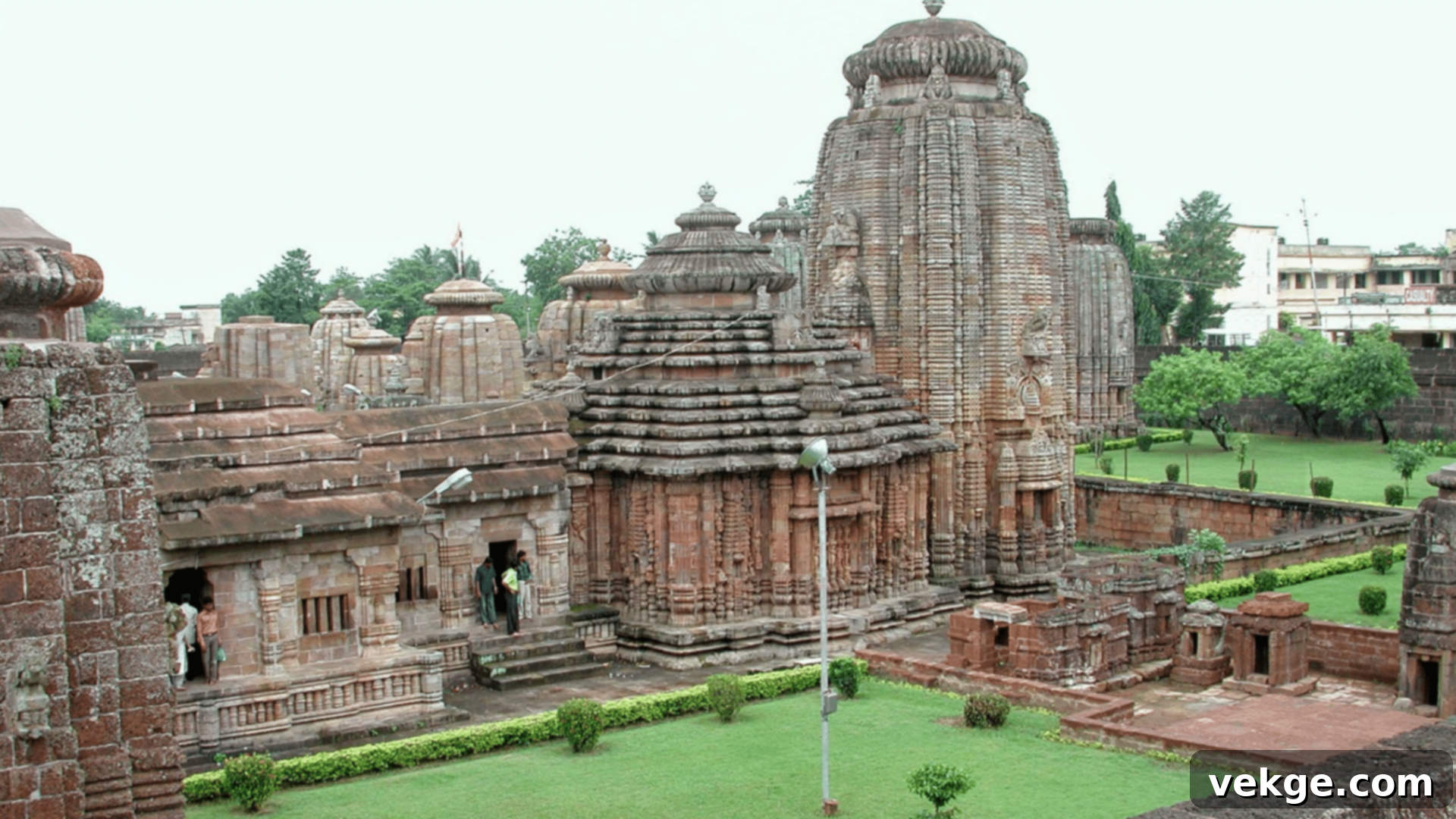
Dating to the 11th century CE, the Lingaraj Temple in Bhubaneswar is one of the oldest and largest temples in Odisha, dedicated to Lord Harihara, a fusion of Vishnu and Shiva. Standing at an impressive height of 54 meters, the temple is a prime example of the Kalinga architectural style, characterized by its towering *deul* (sanctum) and intricate carvings. Remarkably, the temple was constructed without mortar, using precisely interlocking stones, a testament to the engineering brilliance of the period.
The exterior walls are adorned with elaborate rows of carvings depicting scenes from Hindu mythology, celestial beings, animal motifs, and glimpses of daily life. The temple complex includes several smaller shrines, a large walled compound, and a sacred tank. Lingaraj Temple remains an active place of worship and a significant pilgrimage site, representing the zenith of Kalinga temple architecture and a vibrant tradition of Shaivism in Eastern India.
21. Sun Temple (Modhera, Gujarat)
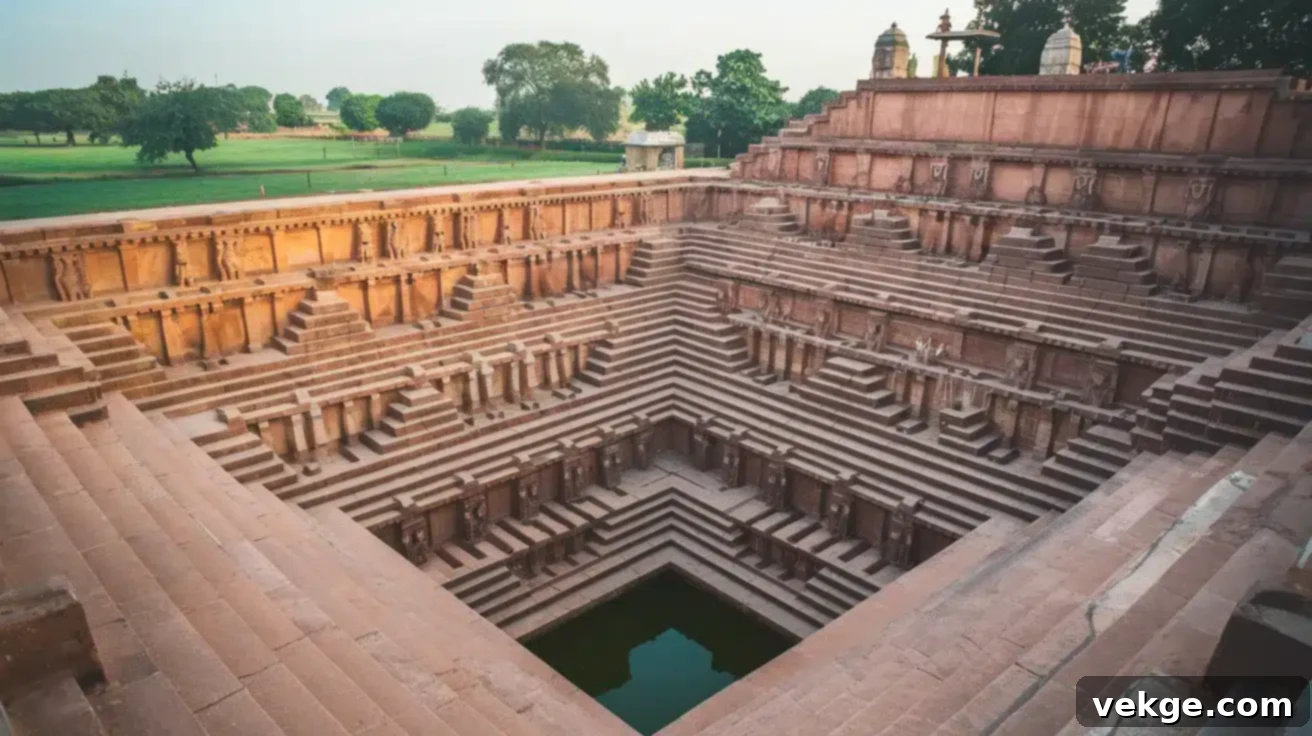
Built in 1026–1027 CE by King Bhima I of the Solanki dynasty, the Sun Temple at Modhera is a splendid example of Hindu temple architecture dedicated to the Sun God, Surya. The temple complex is renowned for its elaborate carvings and meticulous design, which seamlessly integrates with celestial movements. It comprises three main components: a *kunda* (stepped tank), a *sabha mandapa* (assembly hall), and a *garbhagriha* (sanctum sanctorum).
The large stepped tank, known as Rama Kund, features 108 miniature shrines, creating a mesmerizing visual spectacle. The *sabha mandapa* is supported by 52 exquisitely carved pillars, depicting scenes from the Ramayana and Mahabharata, as well as a rich pantheon of gods and goddesses. The temple’s most striking feature is its precise orientation: during the equinoxes, the first rays of the rising sun would illuminate the idol of Surya in the inner chamber, connecting the structure directly with solar movement and ancient astronomical knowledge. Although now in ruins, the temple stands as a magnificent archaeological site, showcasing the artistic and scientific achievements of the Solanki era.
Diverse Architectural Styles of Ancient Indian Buildings
Ancient Indian architecture represents a remarkable legacy of artistic and engineering achievements. These structures served not only functional and religious purposes but also acted as powerful expressions of cultural identity, technological progress, and societal values across various periods of Indian history. Each architectural style developed its own distinctive characteristics, while often maintaining profound connections to the broader artistic and spiritual traditions of the subcontinent.
Indo-Islamic Architecture: A Fusion of Cultures
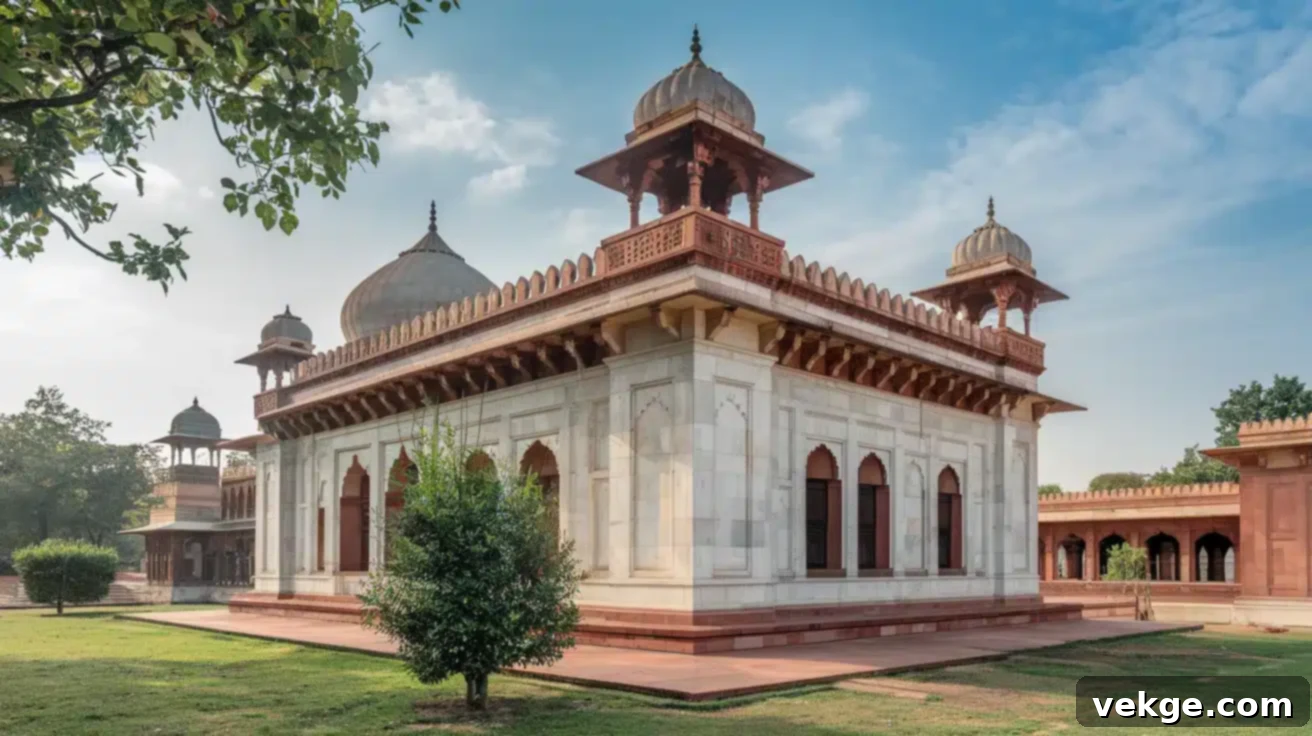
Indo-Islamic architecture represents a magnificent fusion of indigenous Indian design elements with those introduced by Islamic rulers following Muslim conquests in the subcontinent. This unique synthesis emerged from the 12th century onwards, combining geometric patterns, calligraphy, arches, domes, and minarets with traditional Indian decorative motifs and construction techniques. The resulting style is characterized by its grand scale, symmetrical layouts, and elaborate ornamentation.
The Qutub Minar in Delhi, a towering 73-meter minaret started in the early 13th century, is a prime example of this nascent style, showcasing a tapering structure adorned with intricate Islamic calligraphy and subtle Hindu decorative influences. Mughal architecture, a significant branch of the Indo-Islamic tradition, reached its zenith during the 16th and 17th centuries. It is renowned for its symmetrical planning, bulbous domes, elegant four-centred arches, and the extensive use of luxurious materials such as white marble and red sandstone. Iconic structures like the Taj Mahal, with its ethereal beauty and *pietra dura* inlay, and the formidable Red Fort, with its grand red sandstone walls and marble palaces, are the epitome of this architectural brilliance, symbolizing imperial grandeur and artistic refinement.
Dravidian Architecture: Southern India’s Temple Legacy
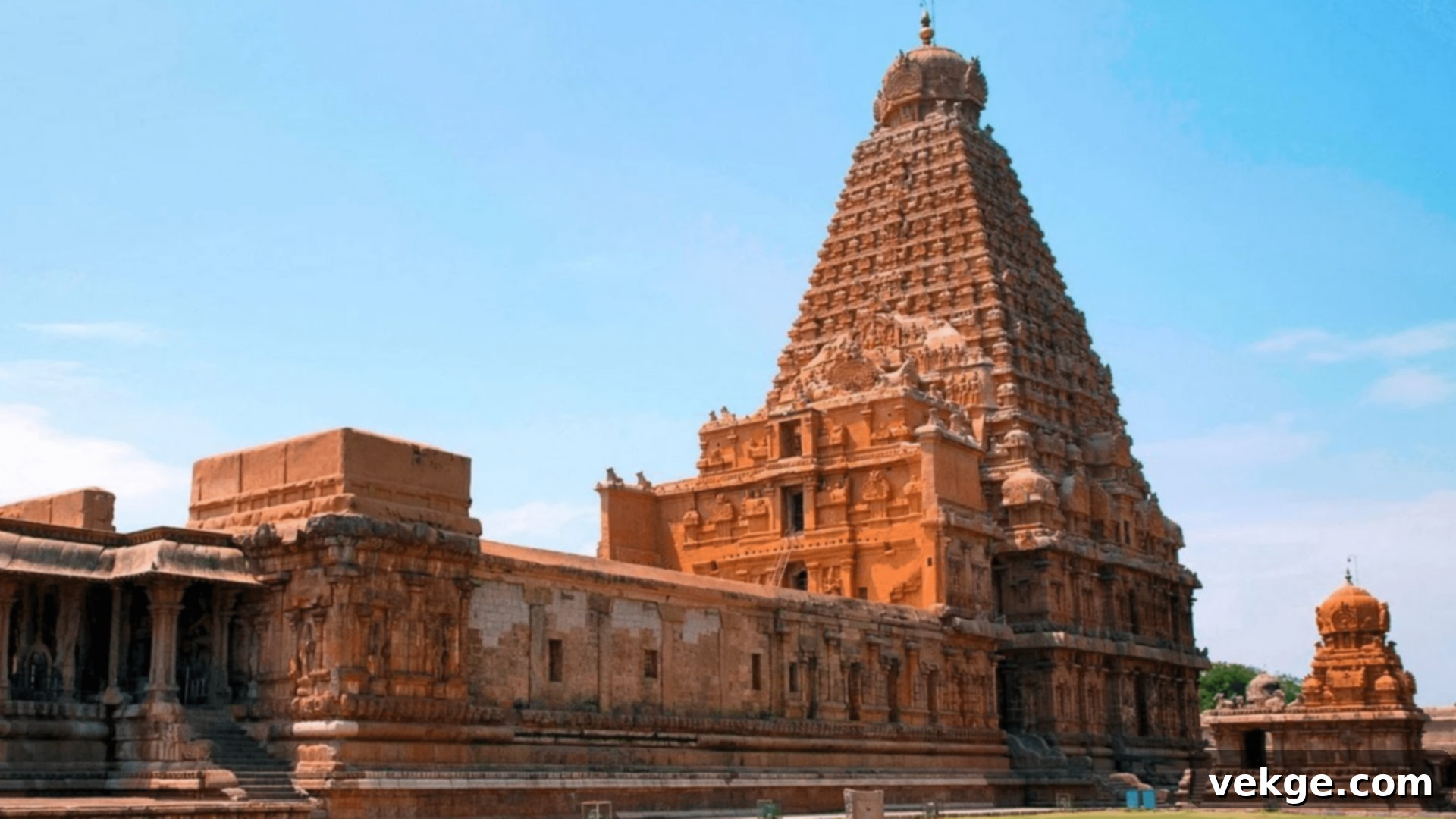
Dravidian architecture flourished predominantly in South India, evolving into a distinctive and highly sophisticated temple style characterized by its massive scale, intricate sculptural details, and unique structural elements. Key features include the monumental pyramid-shaped towers over the sanctum, known as *vimanas*, and the colossal, multi-storeyed gateway towers, called *gopurams*, which are often more elaborate and taller than the central temple structure itself. These temples are typically set within large, concentric rectangular courtyards, punctuated by ornate pillared halls and sacred tanks.
The Brihadeeswarar Temple in Thanjavur, built in the 11th century, is a perfect illustration of this style, with its towering 66-meter-high *vimana* crafted from massive granite blocks, showcasing the immense engineering capabilities of the Chola dynasty. Similarly, the Meenakshi Temple in Madurai stands out with its vibrant and profusely sculpted *gopurams* that reach approximately 50 meters, adorned with thousands of colorful stone sculptures depicting deities and mythological tales. This temple complex is a living testament to the artistic skill and deep devotional traditions of South Indian craftsmen and rulers, reflecting a continuous tradition of temple building over centuries.
Rock-Cut Architecture: Carved into the Earth
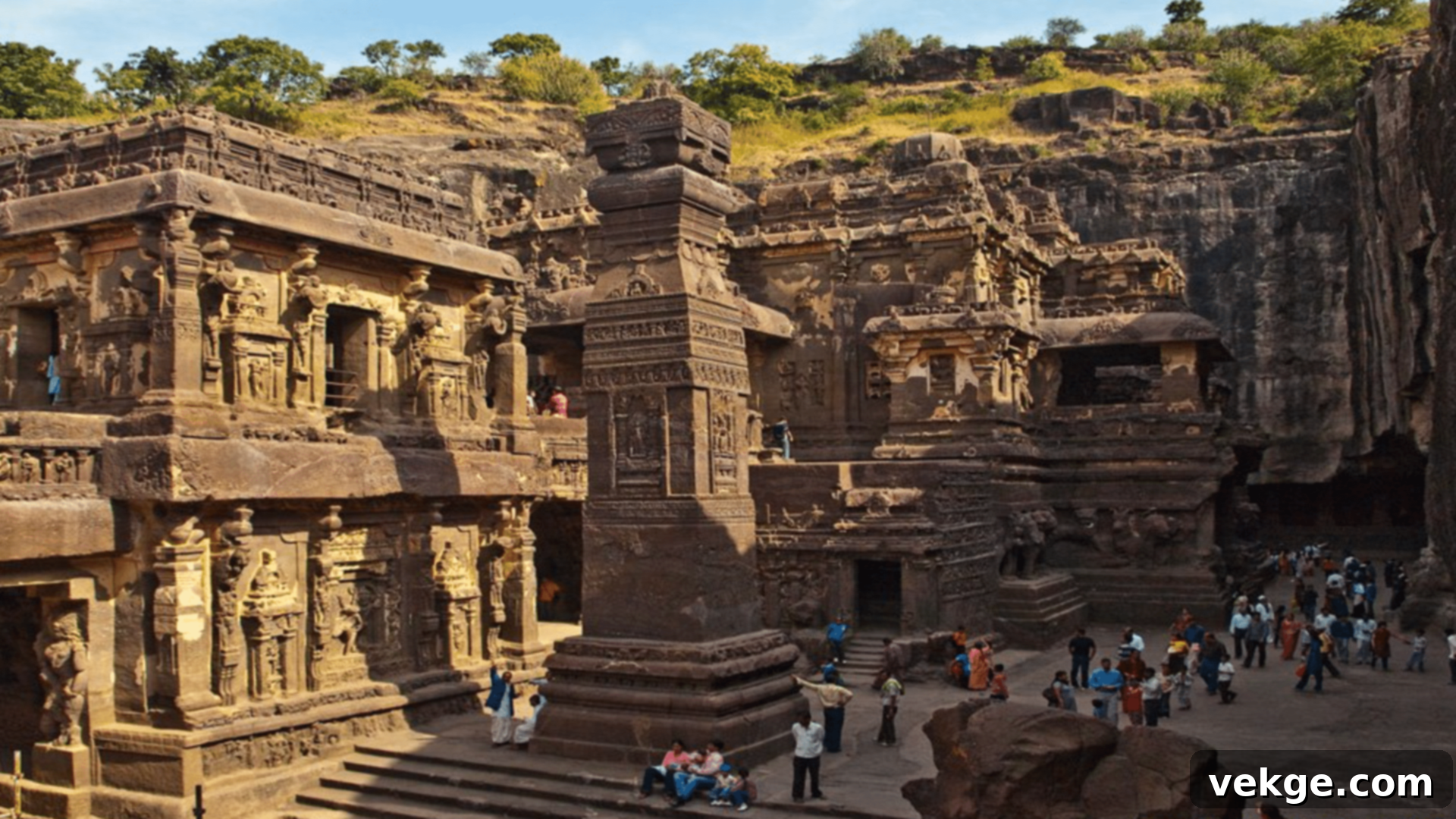
Rock-cut architecture involves the extraordinary technique of carving structures directly into natural rock formations, a practice that reached its zenith in India. This method allowed ancient artisans to create vast and complex temples, monasteries, and assembly halls, often replicating freestanding architectural forms within the solid stone. The Ajanta and Ellora Caves in Maharashtra are the most celebrated examples of this unique architectural approach, showcasing an astonishing level of skill, patience, and artistic vision.
The 30 Buddhist caves at Ajanta, dating from the 2nd century BCE to the 6th century CE, are world-renowned for their elaborate paintings and sculptures that vividly depict Buddhist tales and life. Ellora, with its astounding 34 caves carved between the 6th and 10th centuries, presents a rare confluence of Buddhist, Hindu, and Jain monuments side-by-side, symbolizing a period of religious harmony. Among them, the Kailasa Temple (Cave 16) stands as the absolute masterpiece—the largest monolithic structure in the world, carved entirely from a single rock mass, demonstrating unparalleled engineering and artistic prowess. These rock-cut marvels offer invaluable insights into the religious practices, artistic styles, and engineering ingenuity of ancient Indian craftsmen.
Hindu Temple Architecture: Diverse Regional Expressions
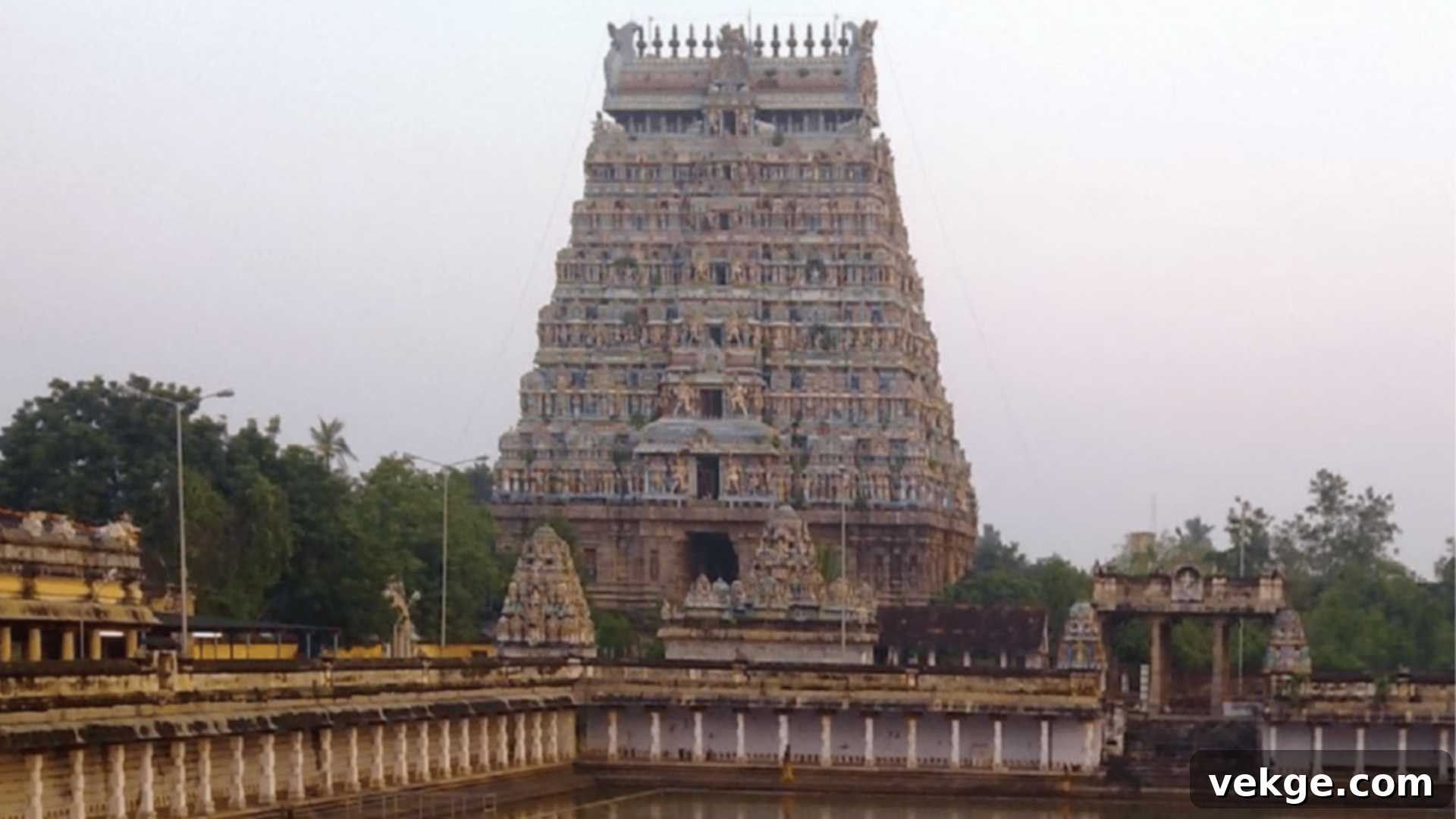
Hindu temple architecture, while adhering to fundamental principles rooted in sacred geometry and cosmological beliefs, evolved significantly over centuries, giving rise to distinct regional styles across India. Despite regional variations, common elements include the *garbhagriha* (sanctum sanctorum, housing the main deity), the *mandapa* (hall for devotees), and the *shikhara* (tower over the sanctum). Temples are invariably adorned with intricate carvings of deities, mythological scenes, and symbolic motifs, reflecting their profound spiritual purpose.
Northern Indian (Nagara style) temples typically feature curvilinear towers that ascend gradually to a point, often resembling a beehive, such as those found at Khajuraho. In contrast, Southern Indian (Dravidian style) temples are known for their stepped pyramidal towers (*vimanas*) and colossal gateway towers (*gopurams*). The Khajuraho temples, built between the 10th and 11th centuries, are a superlative example of Nagara architecture, showcasing exceptional sculptural art that depicts both sacred and secular life. The Konark Sun Temple, constructed in the 13th century, further exemplifies this tradition, demonstrating advanced astronomical knowledge integrated into its design and precise orientation, aligning the structure with solar movements. These temples serve as vital centers of worship, community life, and artistic expression, embodying centuries of religious and cultural evolution.
The Evolution of Ancient Indian Architecture: A Historical Journey
Indian architecture has undergone a profound and fascinating evolution over millennia, reflecting shifting societal structures, religious beliefs, and technological advancements. The earliest evidence of sophisticated urban planning comes from the Indus Valley Civilization (2600–1900 BCE), with cities like Mohenjo-Daro and Harappa featuring grid layouts, advanced drainage systems, and standardized brick buildings, indicating a highly organized society. Early Vedic period structures were largely ephemeral, made of wood and perishable materials, but laid conceptual groundwork for later forms.
During the Buddhist period, particularly under Emperor Ashoka (3rd century BCE–5th century CE), monumental structures like stupas (domed mounds housing relics, e.g., Sanchi), *viharas* (monasteries), and *chaityas* (prayer halls, often rock-cut) became prominent. These structures were often adorned with narrative reliefs depicting Buddhist teachings. The subsequent Gupta era (4th–6th centuries CE) is considered a “Golden Age” for Hindu temple architecture, witnessing the development of freestanding stone temples with distinct *garbhagrihas* and *shikharas*, setting the template for future temple designs.
The medieval period saw the emergence of highly distinctive regional styles. The Nagara style flourished in North India, characterized by its curvilinear *shikharas* and elaborate sculptural programs, exemplified by the Khajuraho temples. Simultaneously, the Dravidian style evolved in South India, known for its towering *vimanas* and ornate *gopurams*, as seen in the Brihadeeswarar Temple. These styles often incorporated local myths, materials, and patronage, leading to incredible diversity.
The arrival of Islamic influence with the Delhi Sultanate in the 13th century marked another significant turning point. This introduced new architectural elements such as true arches, domes, minarets, and intricate geometric and calligraphic ornamentation. These foreign elements began to blend with local techniques and traditions, leading to the development of Indo-Islamic architecture. This fusion reached its spectacular peak with Mughal architecture in the 16th–17th centuries, under emperors like Akbar, Shah Jahan, and Aurangzeb, giving us masterpieces like the Taj Mahal and the Red Fort, which integrated Persian, Central Asian, and Indian aesthetics into a harmonious whole.
Throughout this evolution, cultural and religious values profoundly shaped design choices. Buddhist ideals of monastic life influenced the layout of *viharas* and the symbolism of stupas. Hindu temples reflected cosmic beliefs, with their layouts mirroring the mandala and their sculptures depicting a rich pantheon of deities and epic narratives. Islamic architectural principles introduced elements of egalitarianism in congregational spaces, focus on symmetry, and the use of water features for spiritual and aesthetic purposes. Different patrons—from wealthy Buddhist traders to powerful Hindu kings and influential Muslim rulers—left their indelible mark on India’s architectural landscape, each contributing to a layered and diverse heritage based on their unique traditions, resources, and needs, making India’s architectural journey one of continuous innovation and adaptation.
Conclusion
India’s ancient buildings are far more than mere historical relics; they are vital cultural treasures deserving of rigorous protection and ongoing study. These extraordinary structures offer irreplaceable insights into historical construction techniques, unparalleled artistic achievements, and the deeply rooted cultural and spiritual values that have spanned thousands of years of human civilization.
Each monument, whether a towering temple, a fortified palace, or a humble rock-cut cave, tells a unique and compelling story about the communities that created them—from their profound spiritual beliefs and advanced scientific knowledge to their societal structures and daily lives. They serve as tangible links to our collective past, showcasing the continuous innovation and artistic expression that defined ancient India.
Preserving these architectural marvels is not just about safeguarding old stones; it is about honoring the ingenuity and craftsmanship of past generations, maintaining crucial connections to India’s incredibly diverse and vibrant heritage, and ensuring that these stories continue to be told. They are irreplaceable sources of inspiration, knowledge, and national pride.
By actively visiting these sacred and historical sites, diligently studying their intricate designs, and supporting dedicated conservation efforts, we can collectively ensure that these magnificent structures continue to educate, inspire, and captivate future generations about India’s truly extraordinary and enduring architectural legacy. These silent sentinels of history remind us of the enduring power of human creativity and devotion.
Frequently Asked Questions About Ancient Indian Architecture
What is the most famous ancient building in India?
The Taj Mahal is widely considered the most famous ancient building in India. Commissioned by Emperor Shah Jahan in memory of his beloved wife Mumtaz Mahal, it stands as an unparalleled symbol of eternal love and breathtaking architectural brilliance, fusing Persian, Islamic, and Indian design elements into a white marble masterpiece.
How do ancient Indian buildings reflect the country’s cultural and religious history?
Ancient Indian buildings profoundly reflect the country’s diverse cultural and religious history through their intricate designs, symbolism, and construction. Temples, stupas, and mosques embody spiritual beliefs, with their layouts, sculptures, and inscriptions narrating epic tales, depicting deities, and illustrating philosophical concepts. The choice of materials, artistic expressions, and advanced engineering techniques showcase the technological prowess and the prevailing societal values of different eras, offering a rich tapestry of India’s multifaceted heritage.
Why is it important to preserve ancient Indian architecture?
Preserving ancient Indian architecture is critically important for several reasons. Firstly, it safeguards an irreplaceable cultural heritage, connecting present and future generations to India’s rich past. Secondly, these structures offer invaluable insights into historical craftsmanship, engineering techniques, and artistic traditions. Thirdly, they serve as powerful educational resources and sources of national identity, promoting cultural understanding and appreciation. Finally, many of these sites are active places of worship or community gathering, ensuring their continued relevance and spiritual significance.
Which architectural styles are most prominent in ancient India?
The most prominent architectural styles in ancient India include: Dravidian Architecture (characterized by towering gopurams and vimanas in South Indian temples), Nagara Architecture (known for curvilinear shikharas in North Indian temples), Indo-Islamic Architecture (a fusion style with arches, domes, and minarets, notably Mughal architecture), and Rock-Cut Architecture (seen in the magnificent caves of Ajanta and Ellora, carved directly from cliffs).
What are some key characteristics of ancient Indian temple architecture?
Ancient Indian temple architecture is distinguished by several key characteristics: the presence of a garbhagriha (sanctum sanctorum), a mandapa (pillared hall), and a *shikhara* (tower over the sanctum). Temples are often adorned with intricate carvings depicting deities, mythological narratives, and auspicious symbols. They follow principles of Vastu Shastra (ancient architectural science) and frequently incorporate complex geometric patterns, often built around a central axis to symbolize cosmic order.
